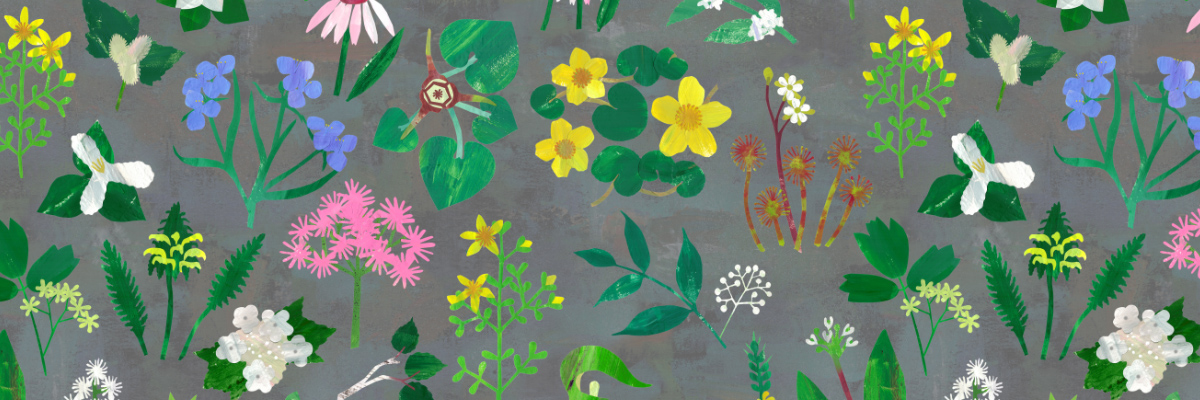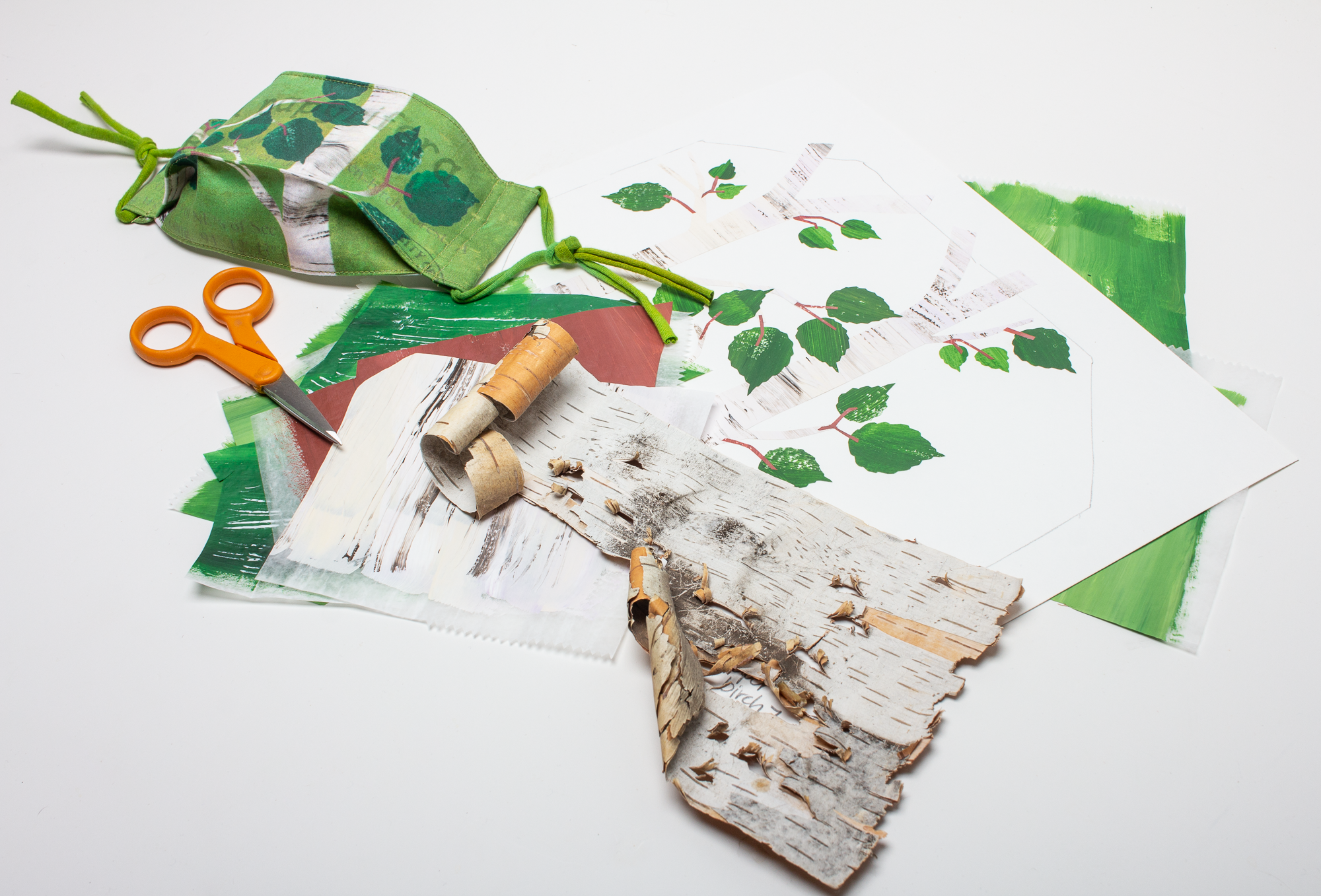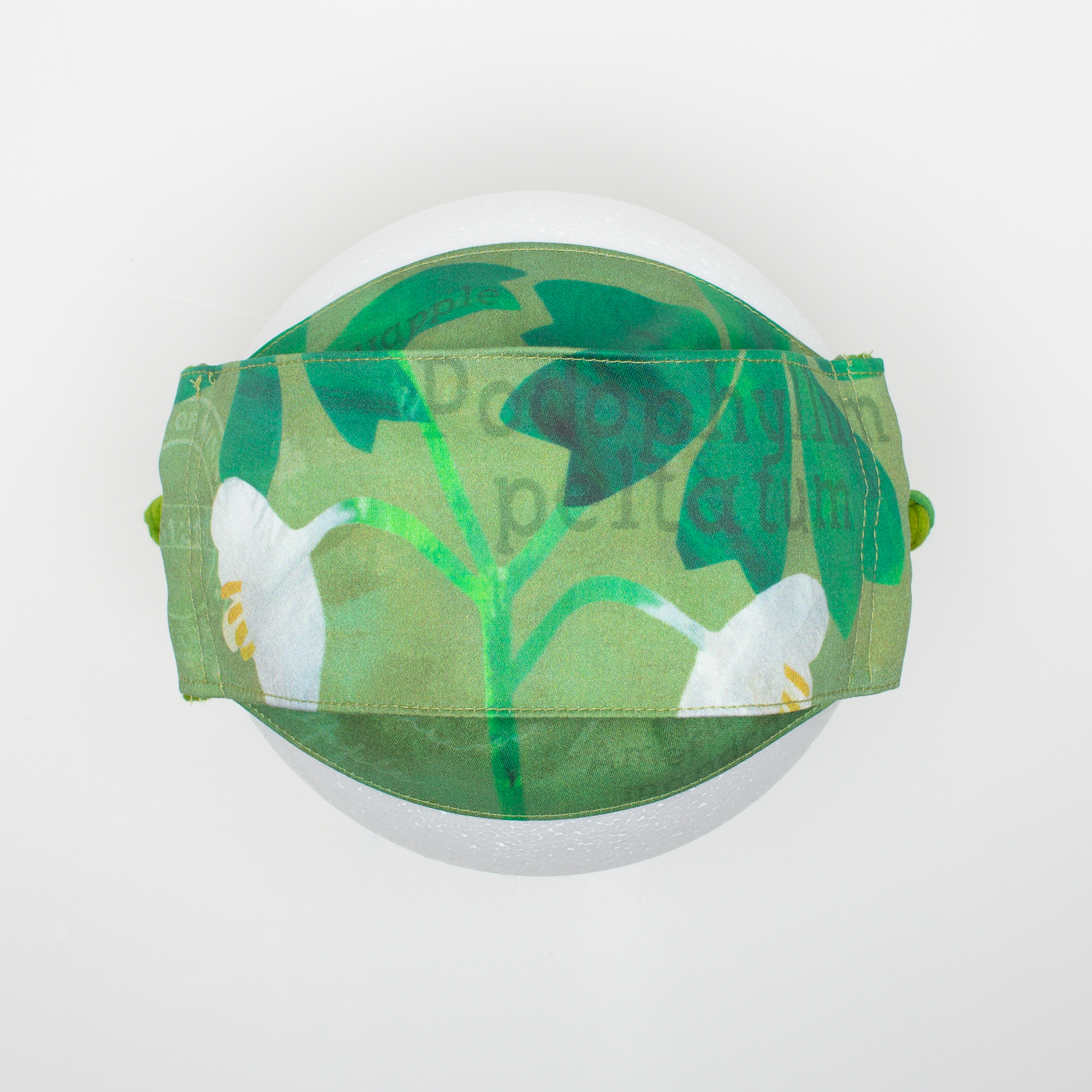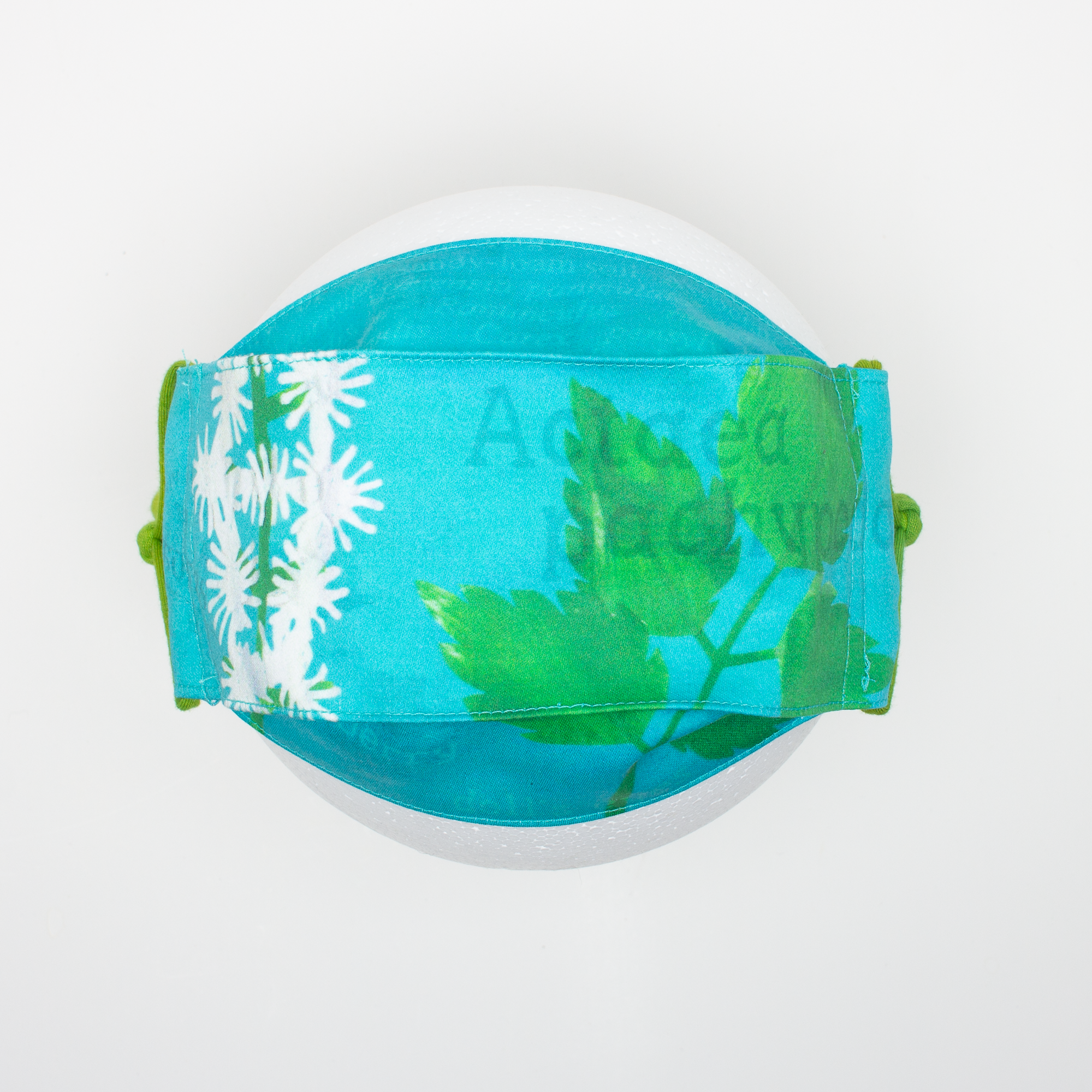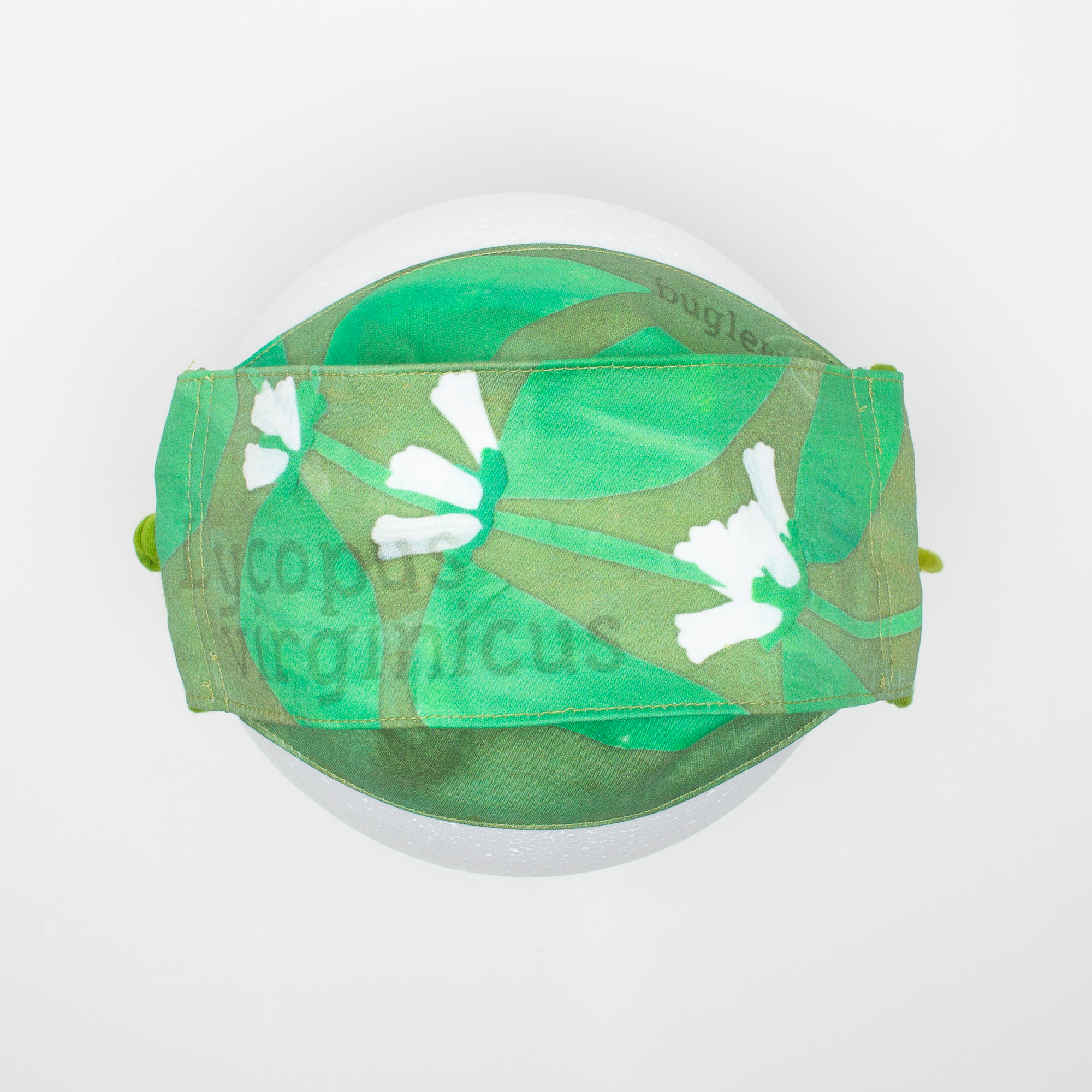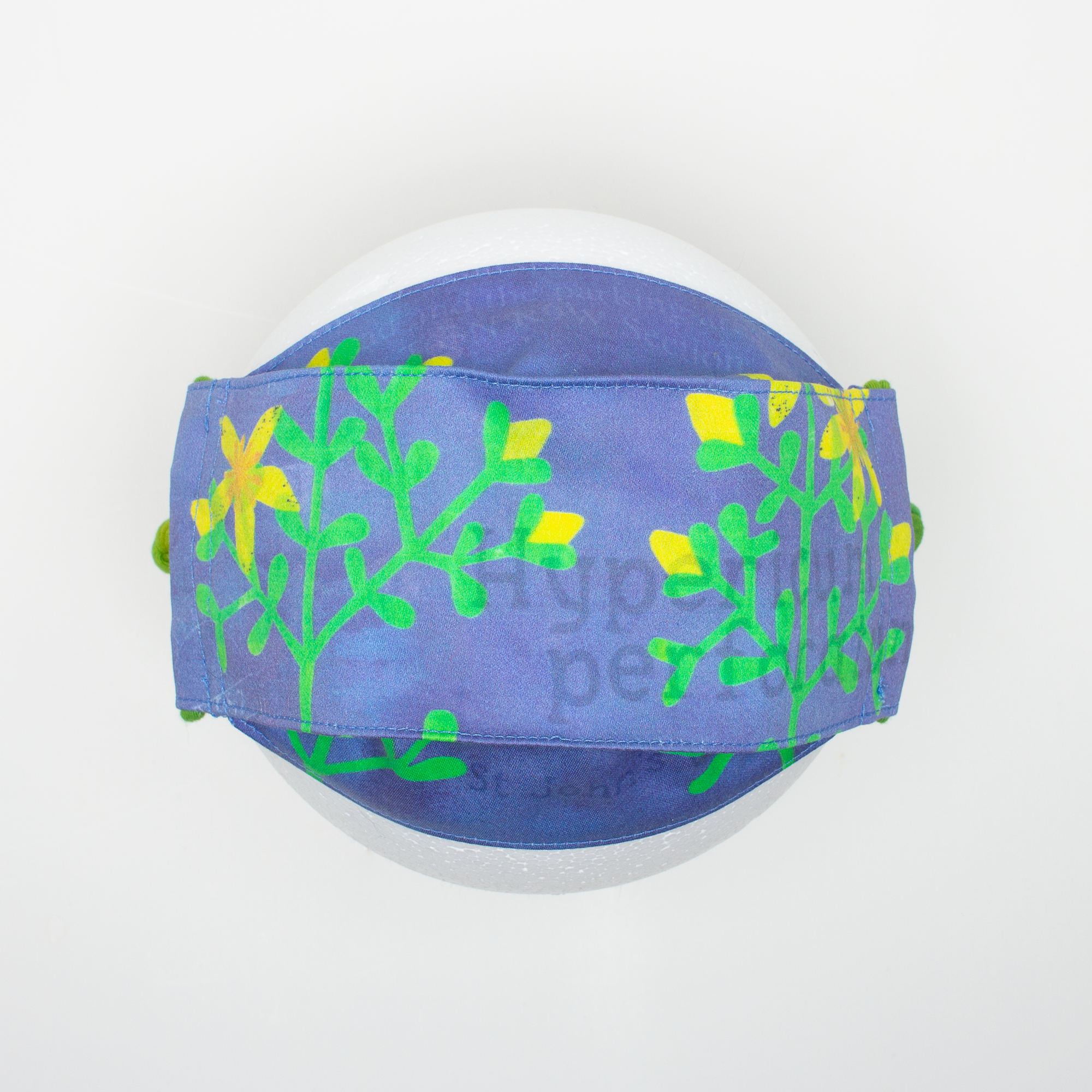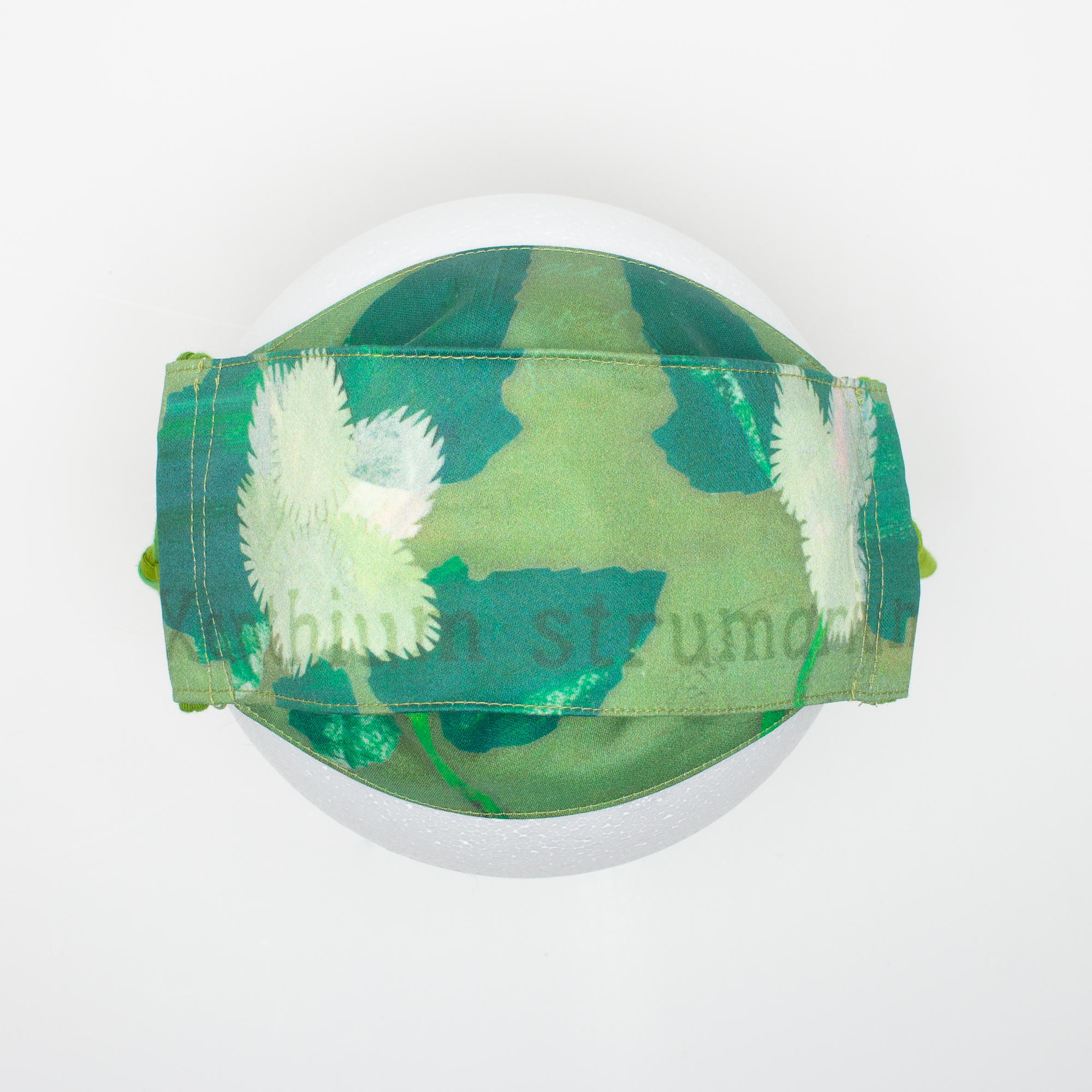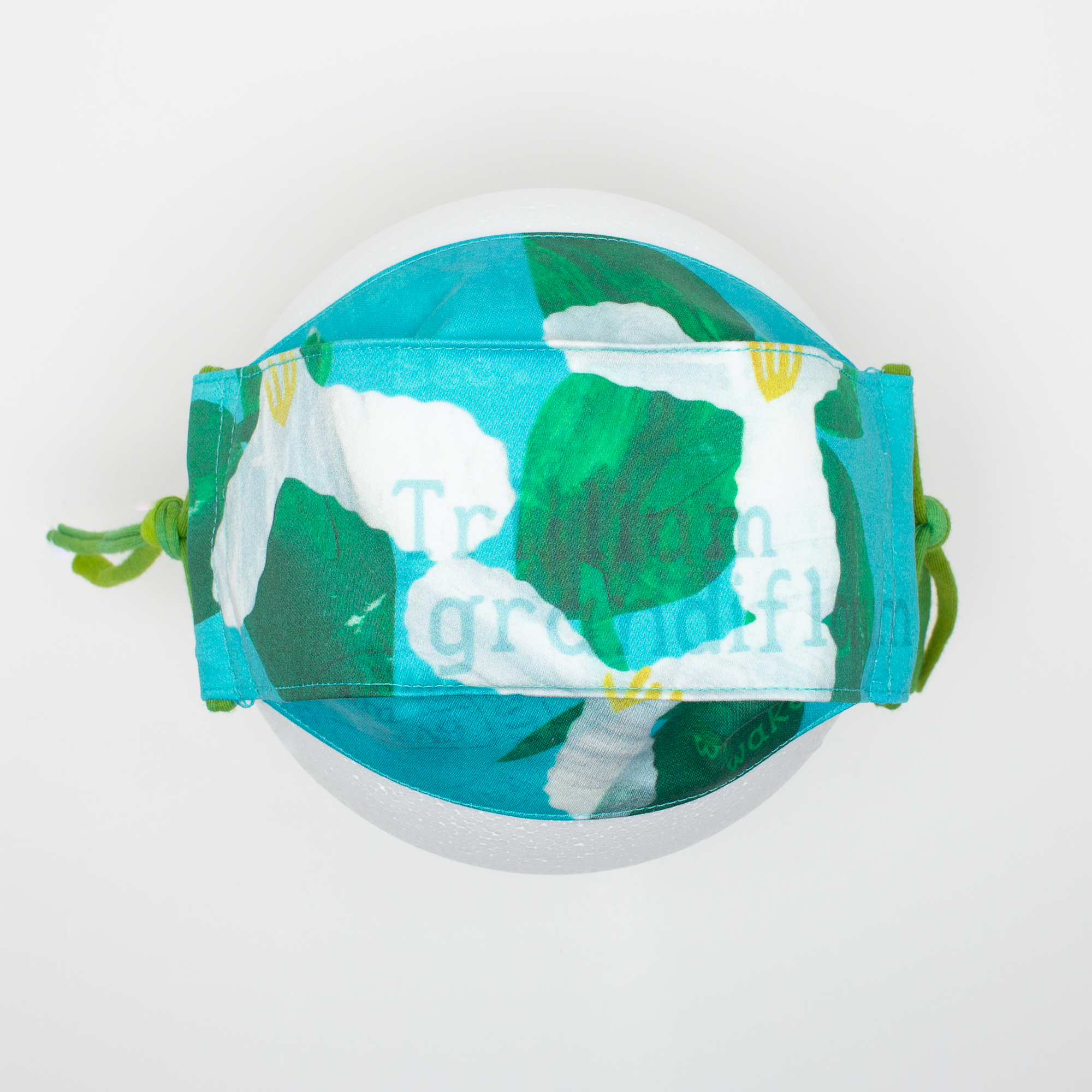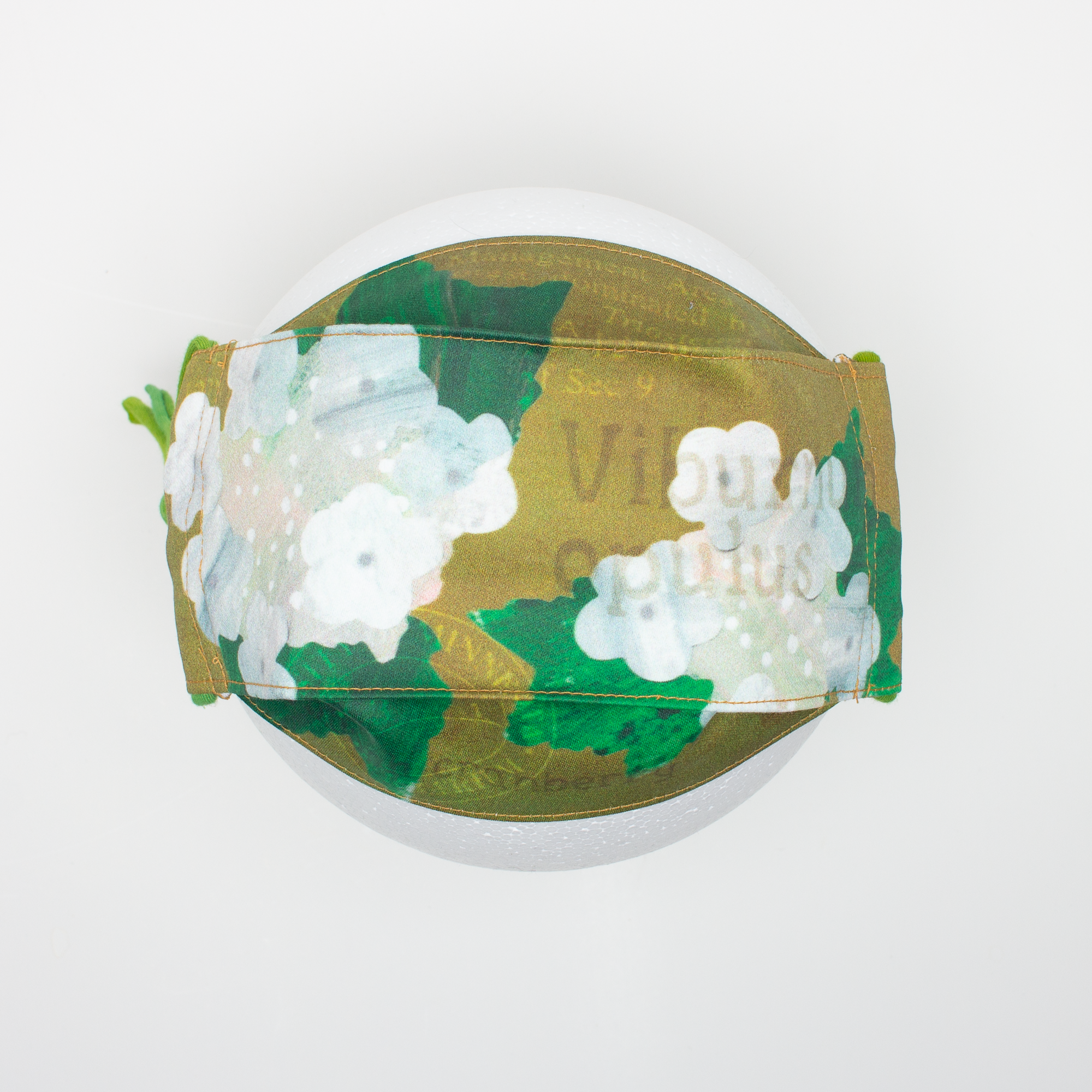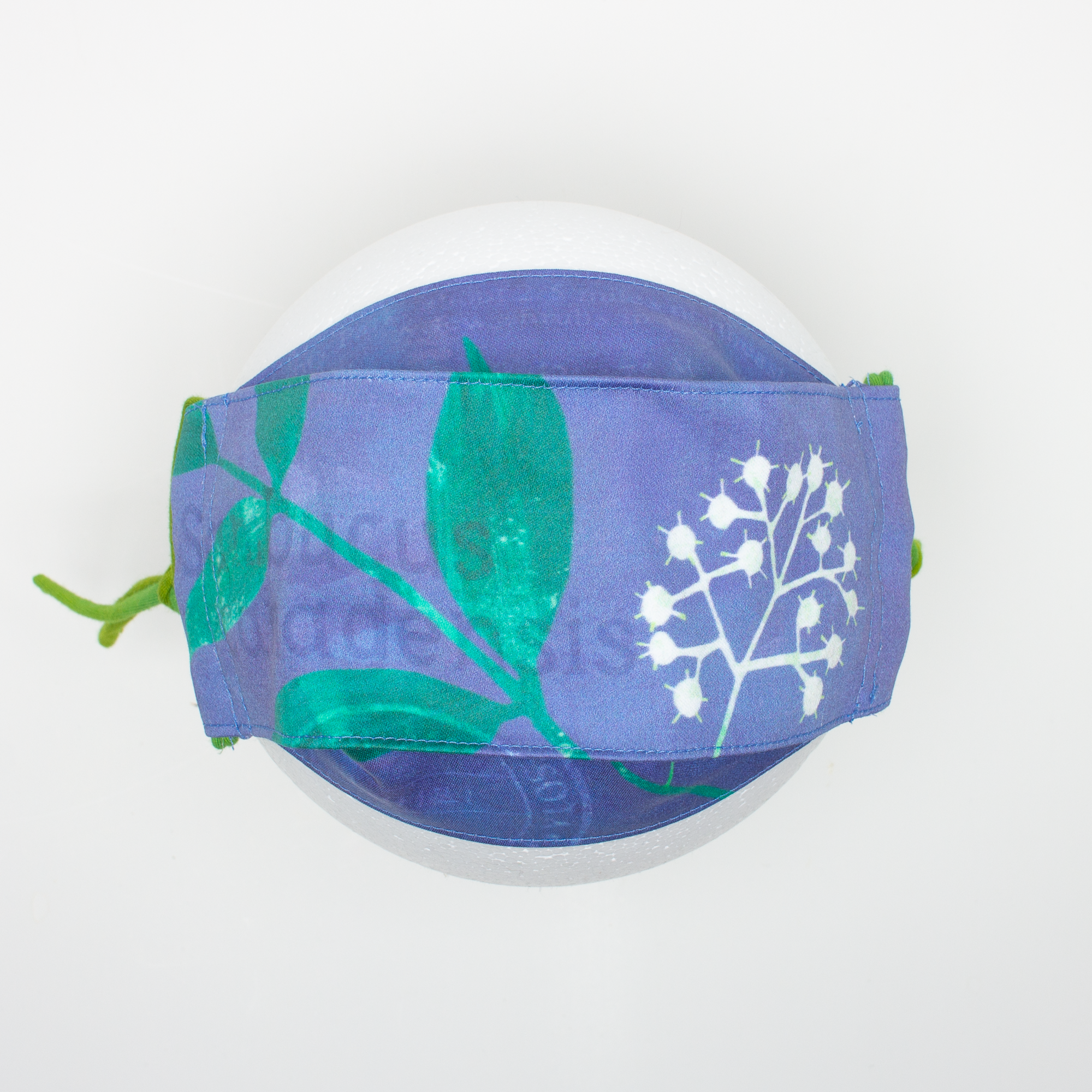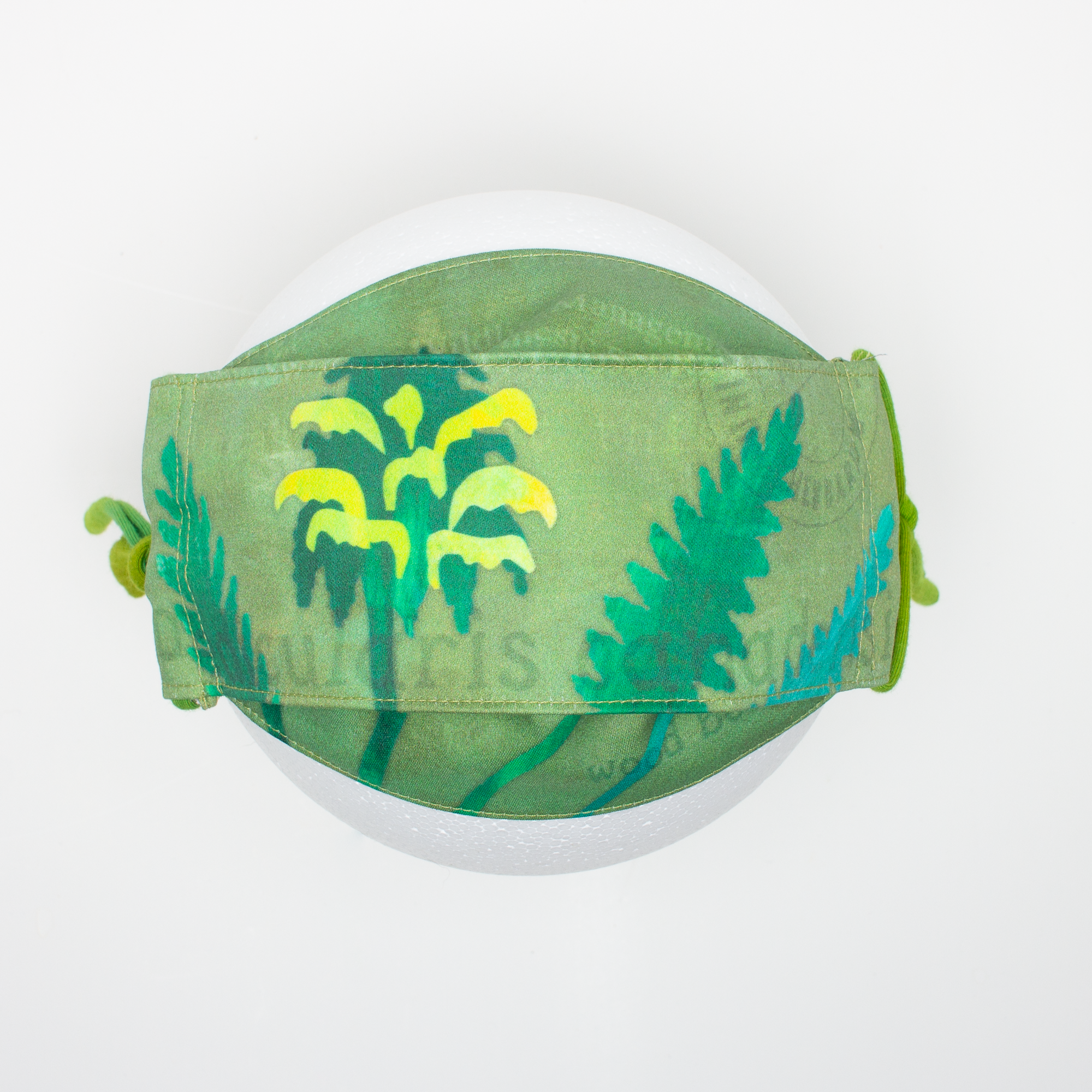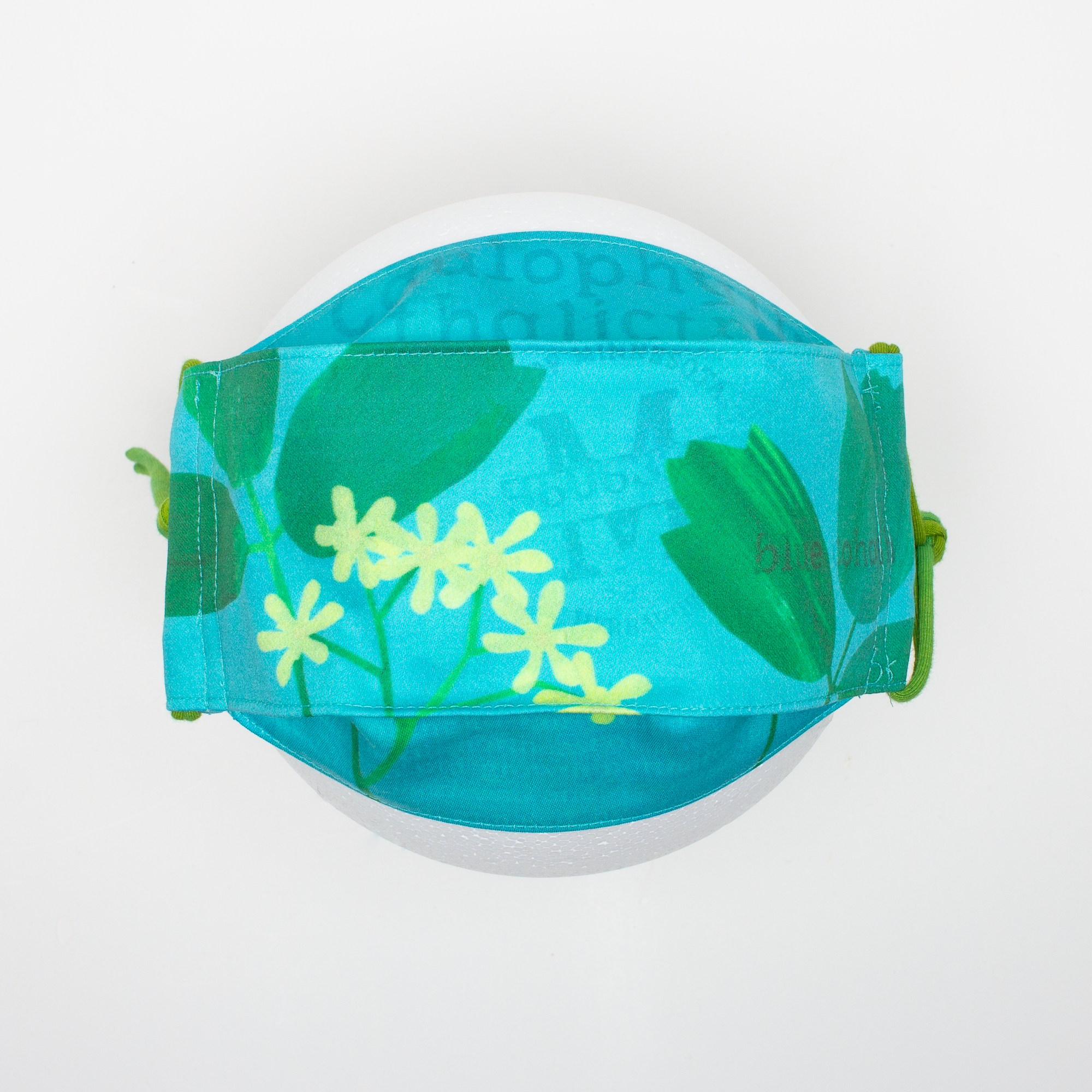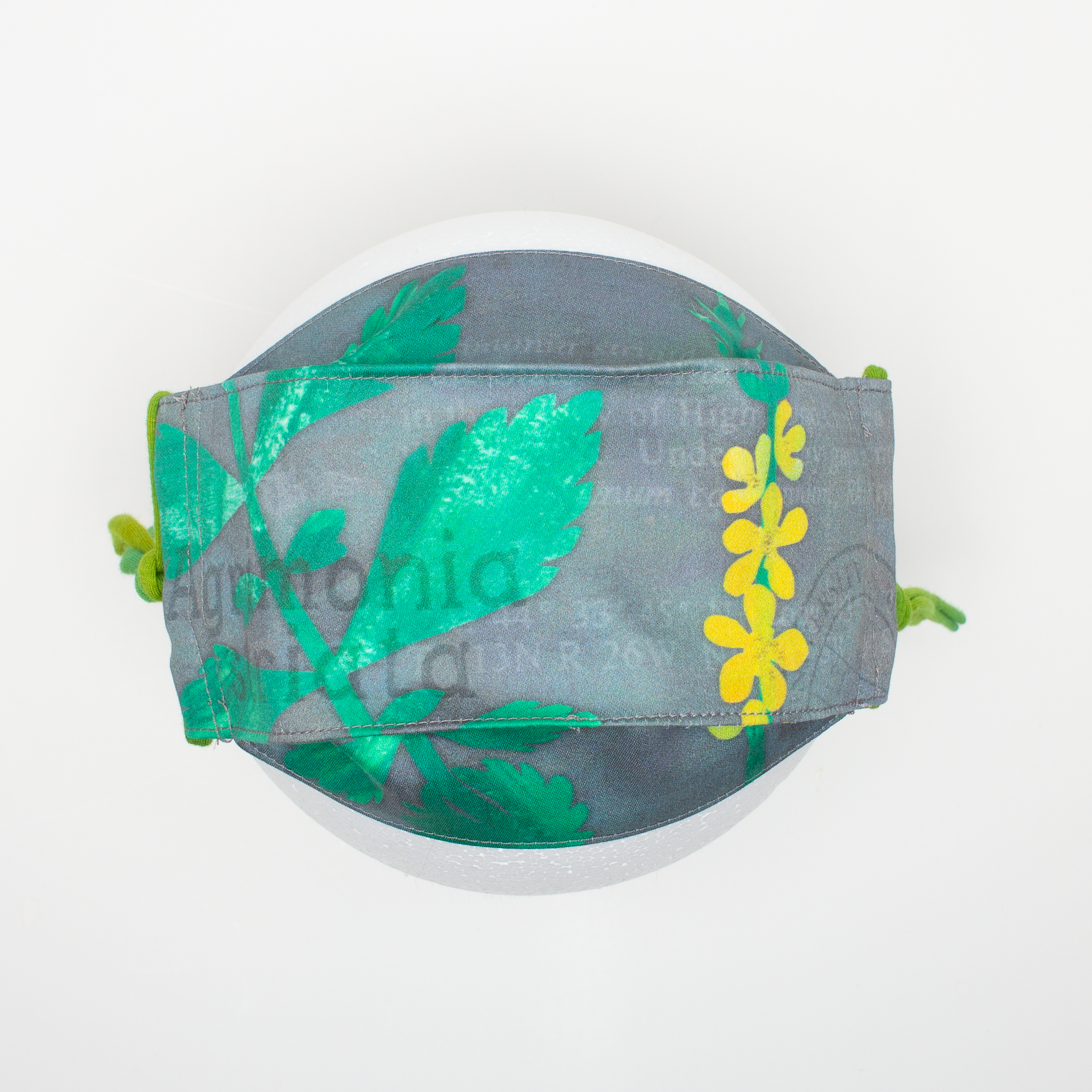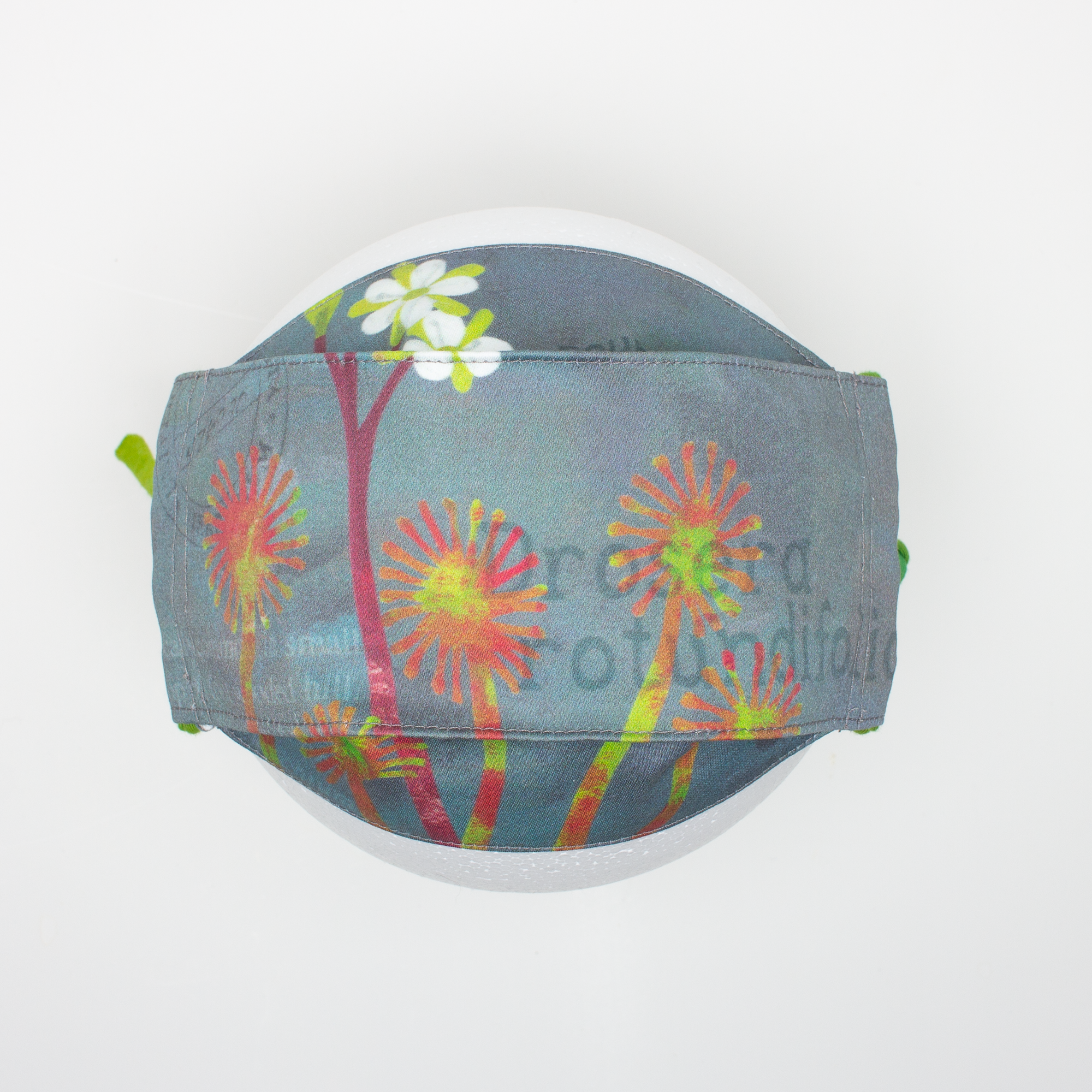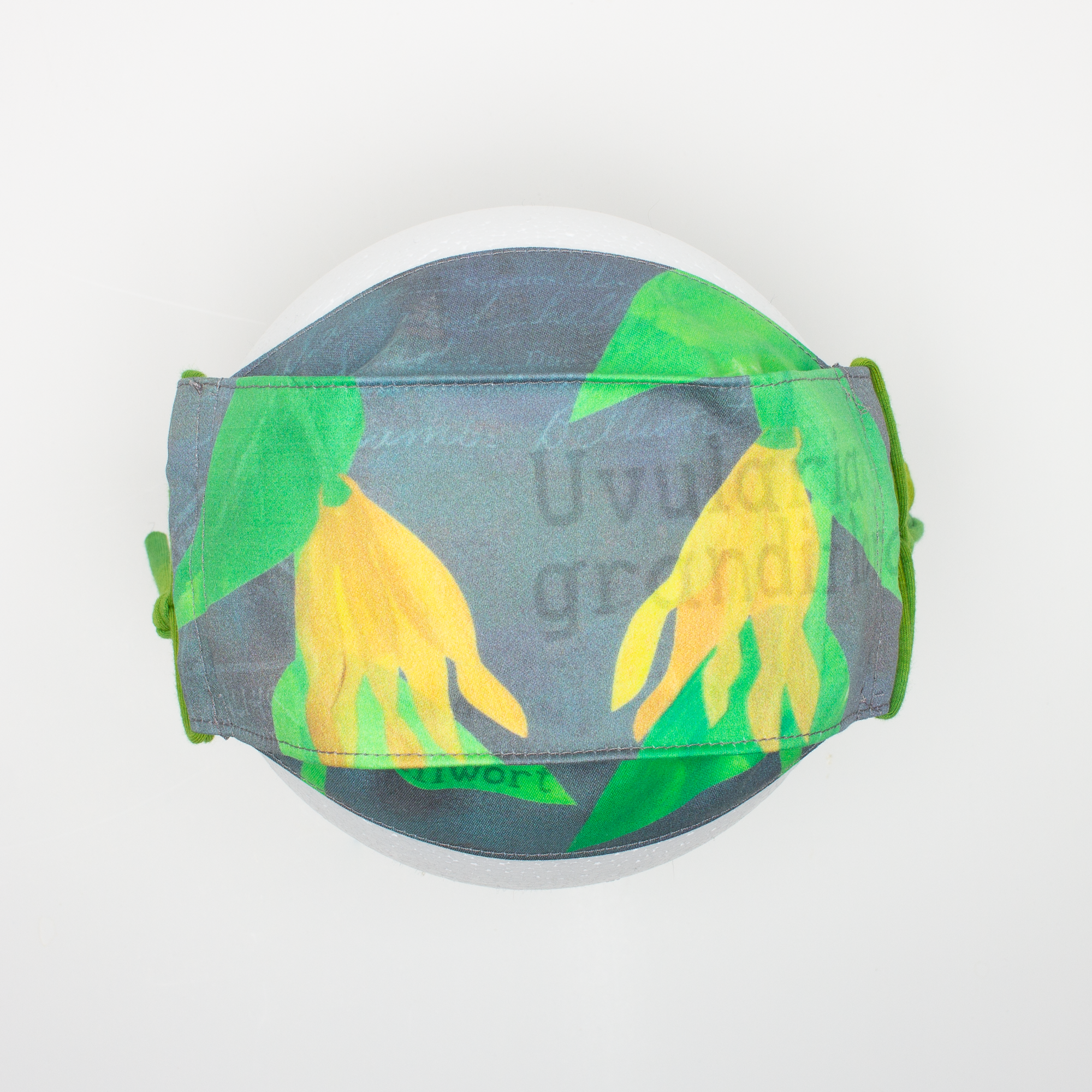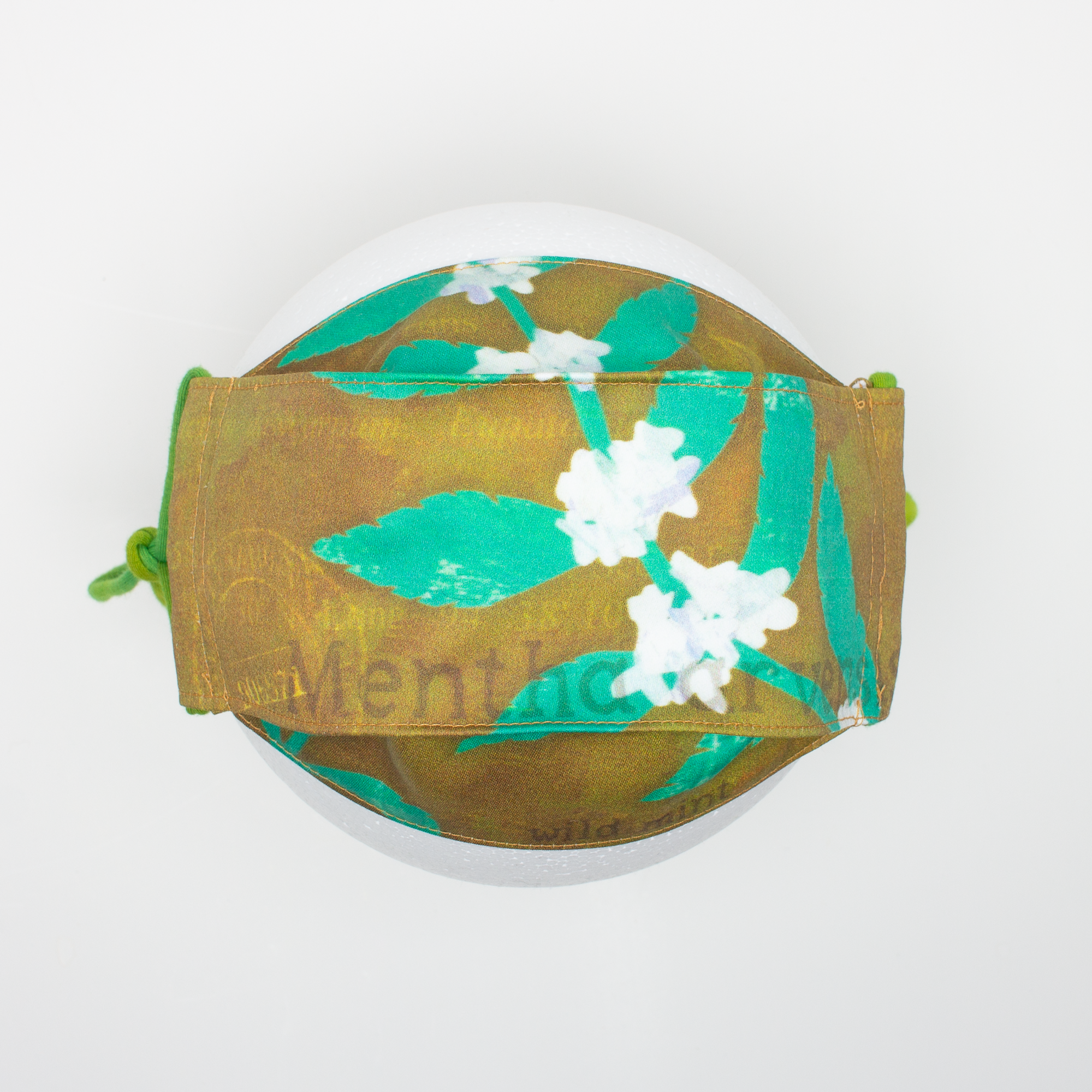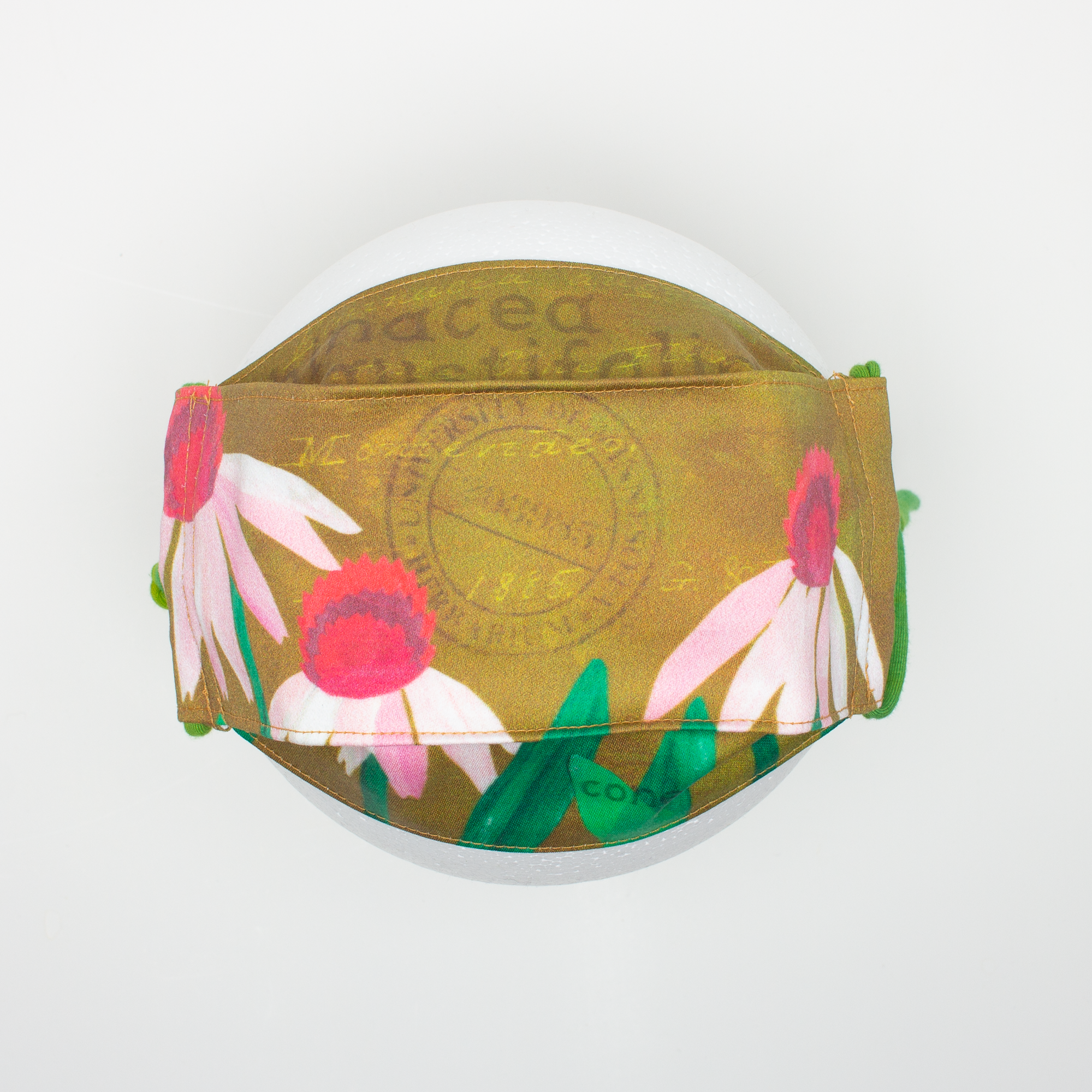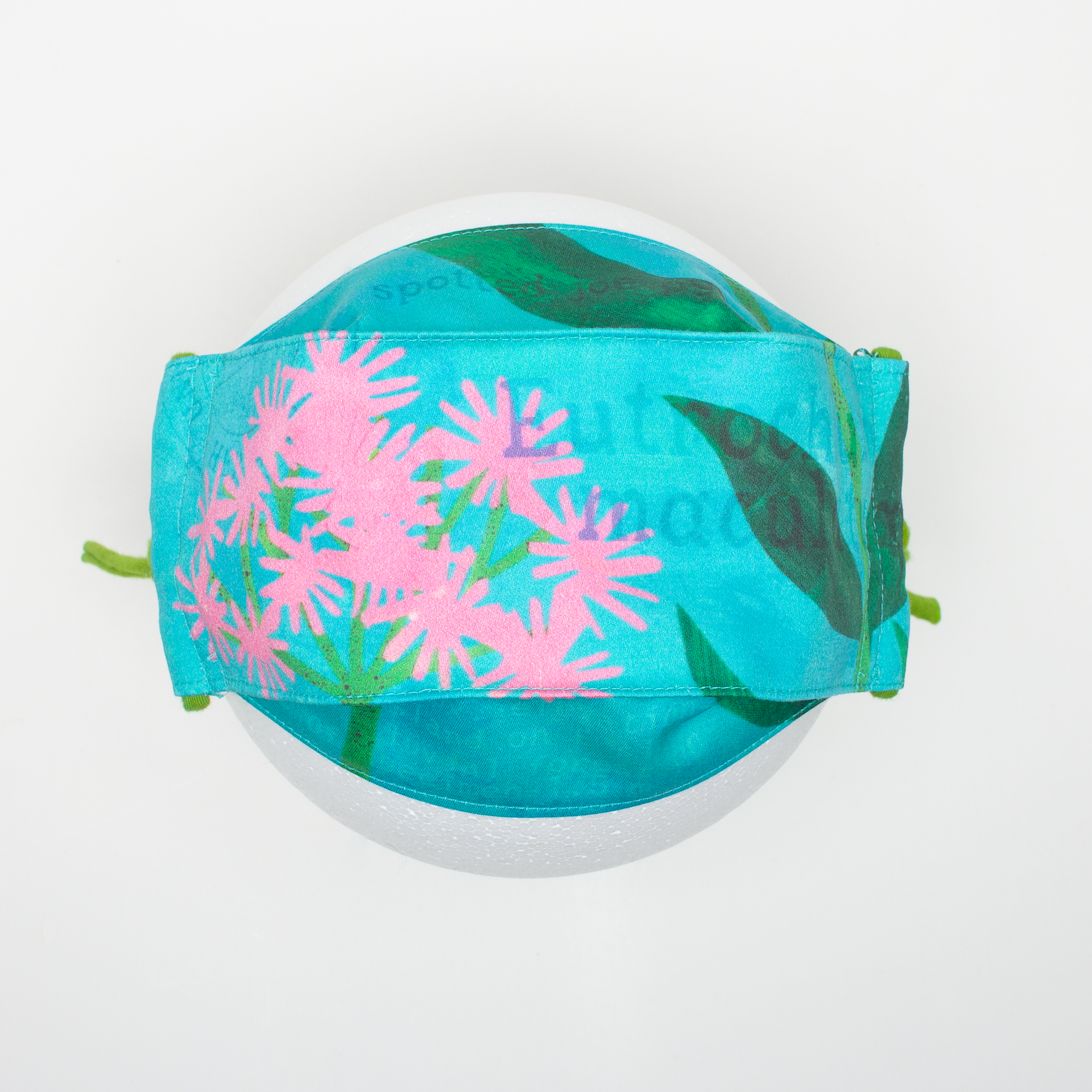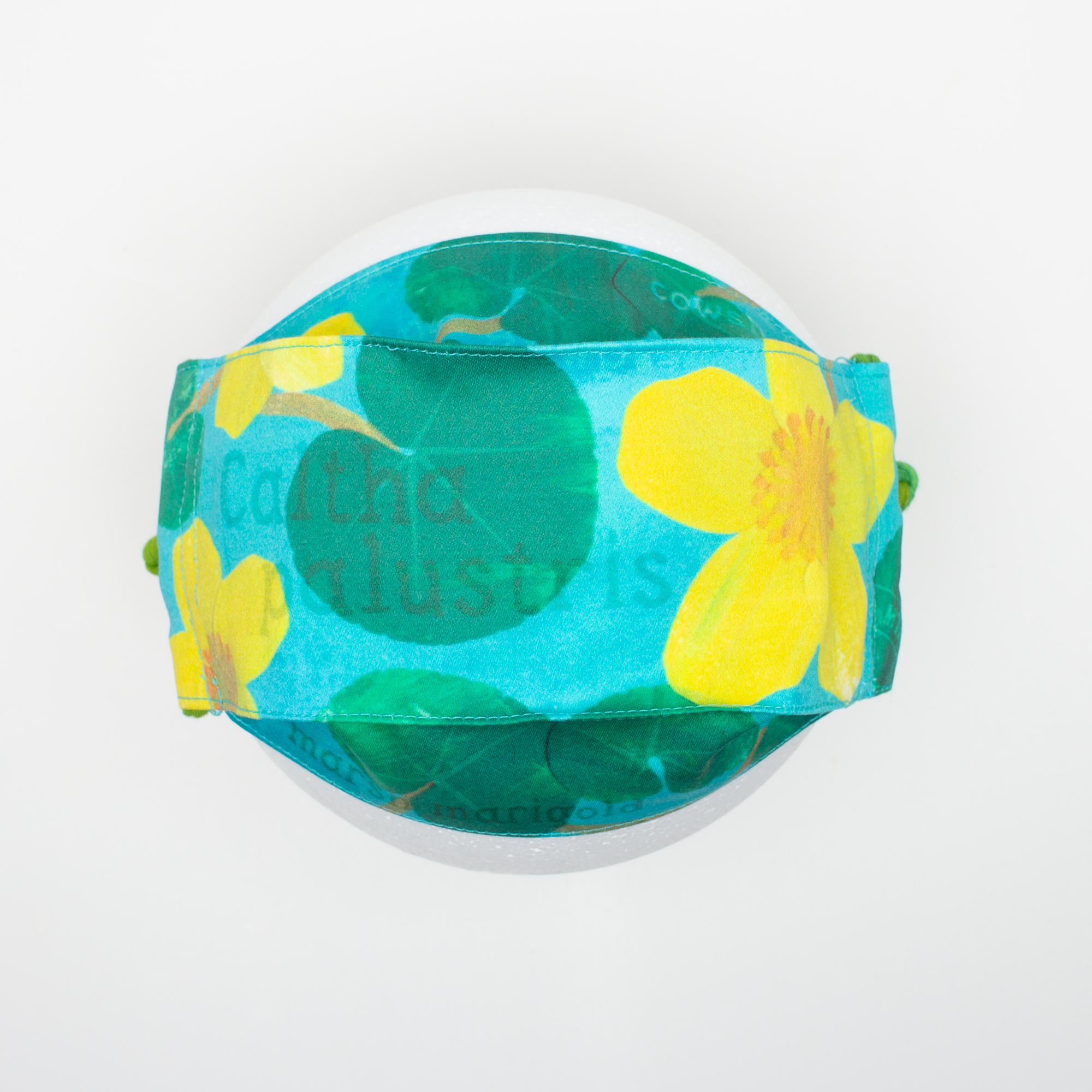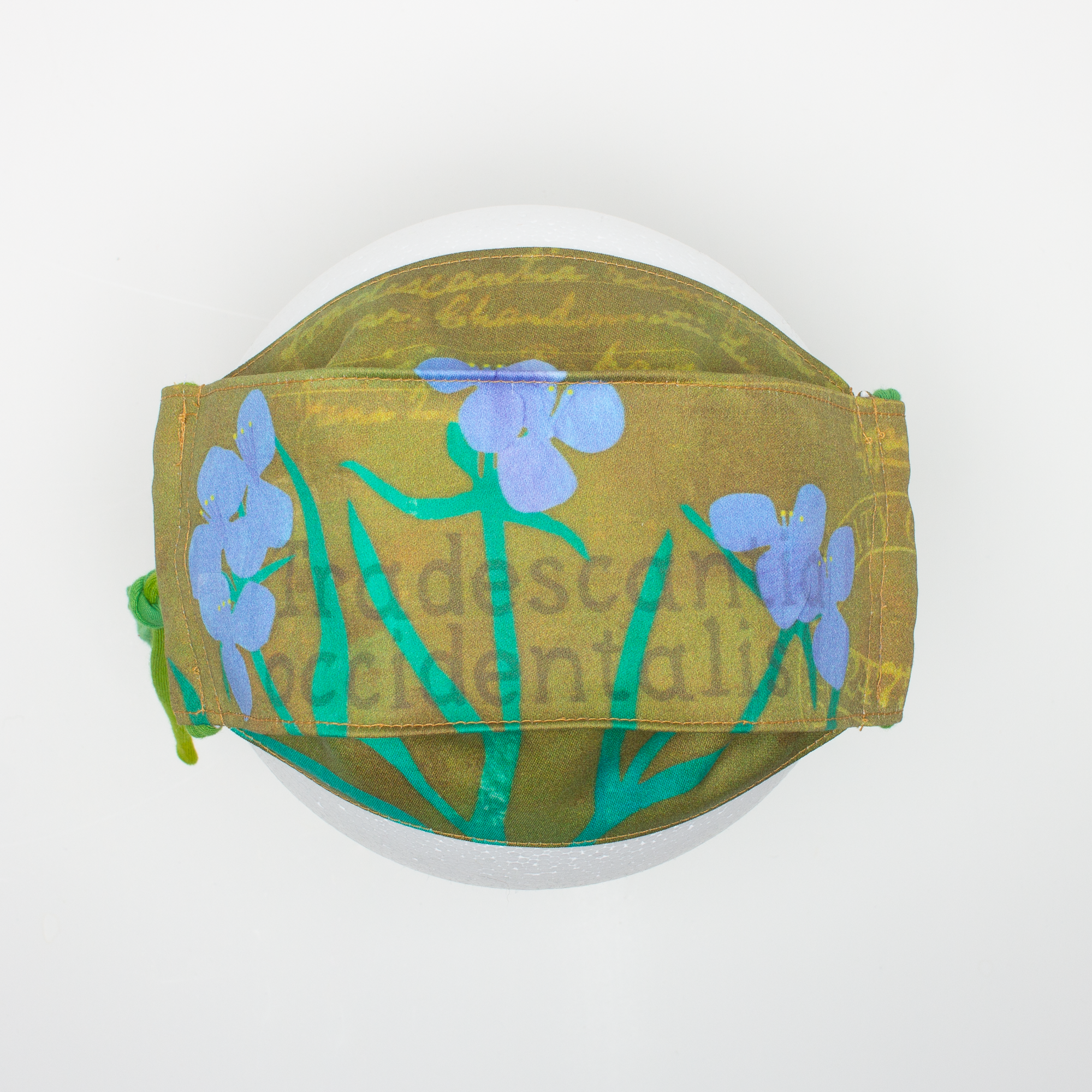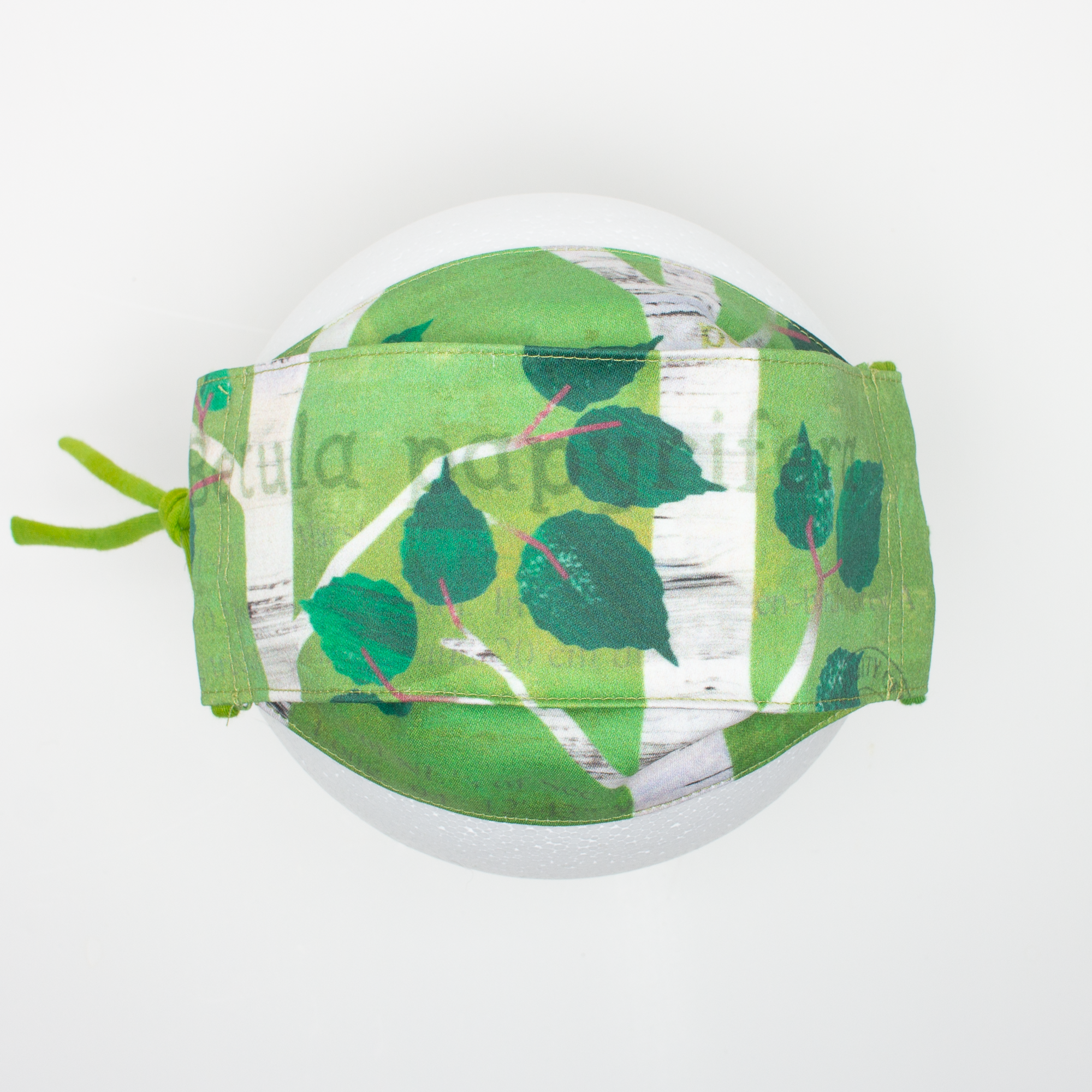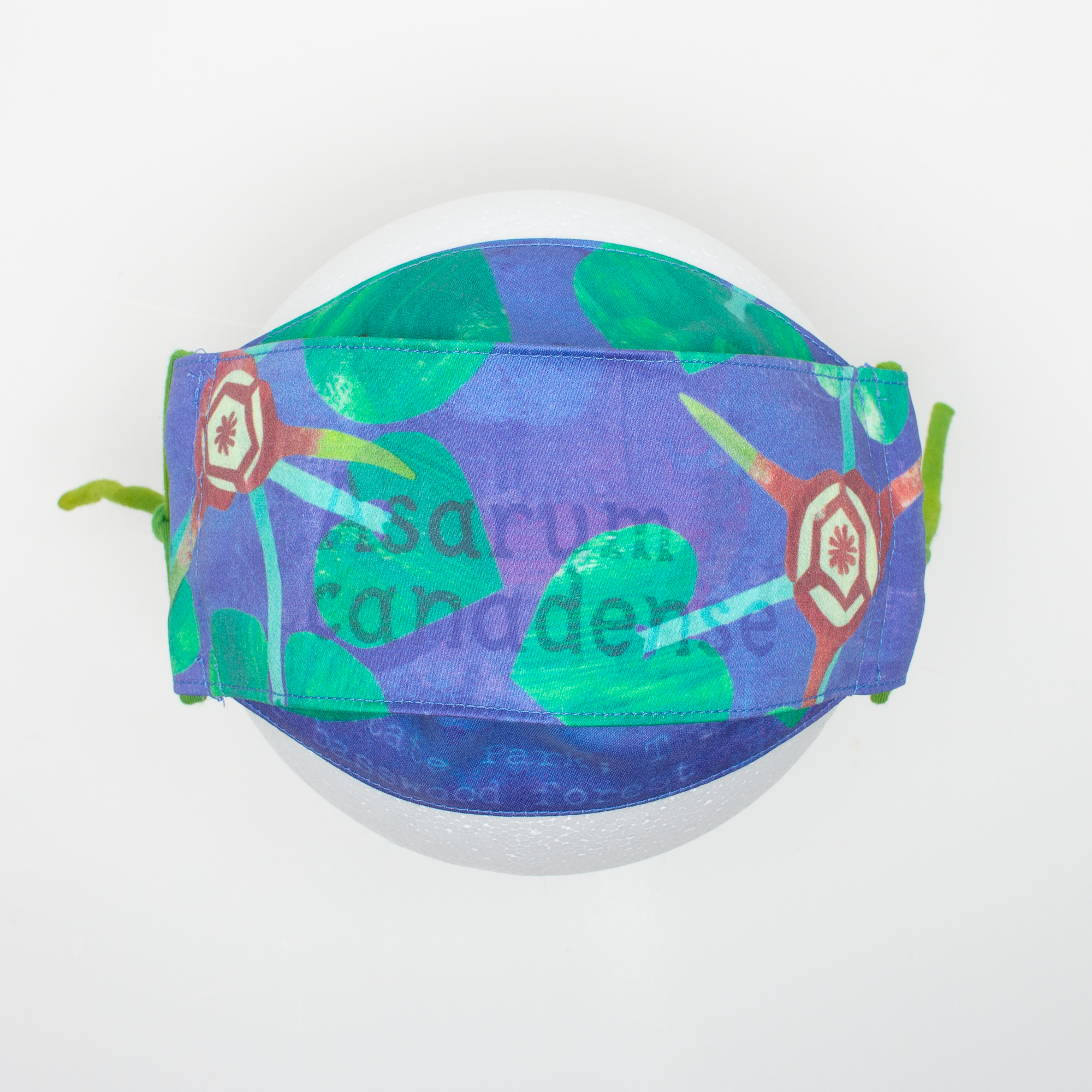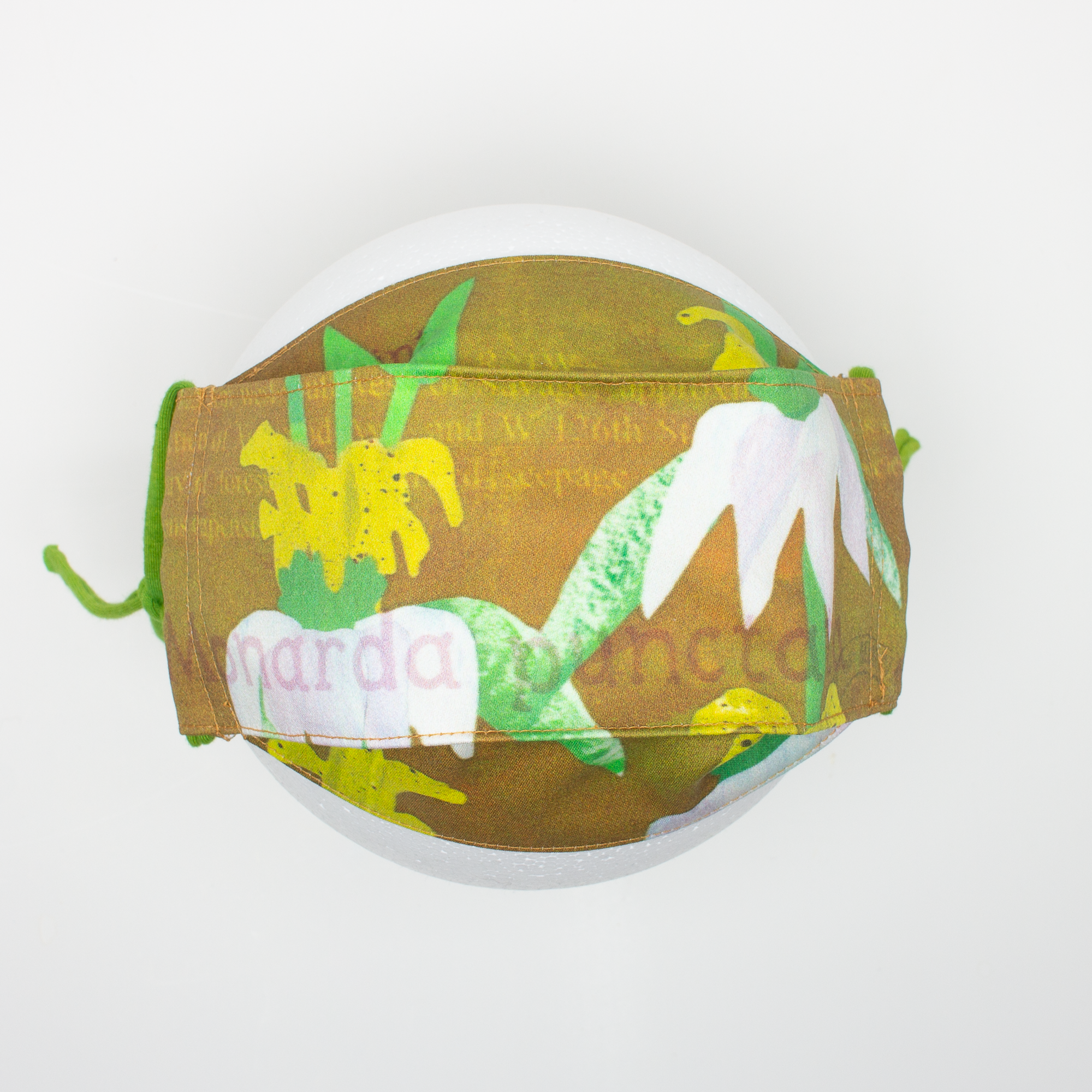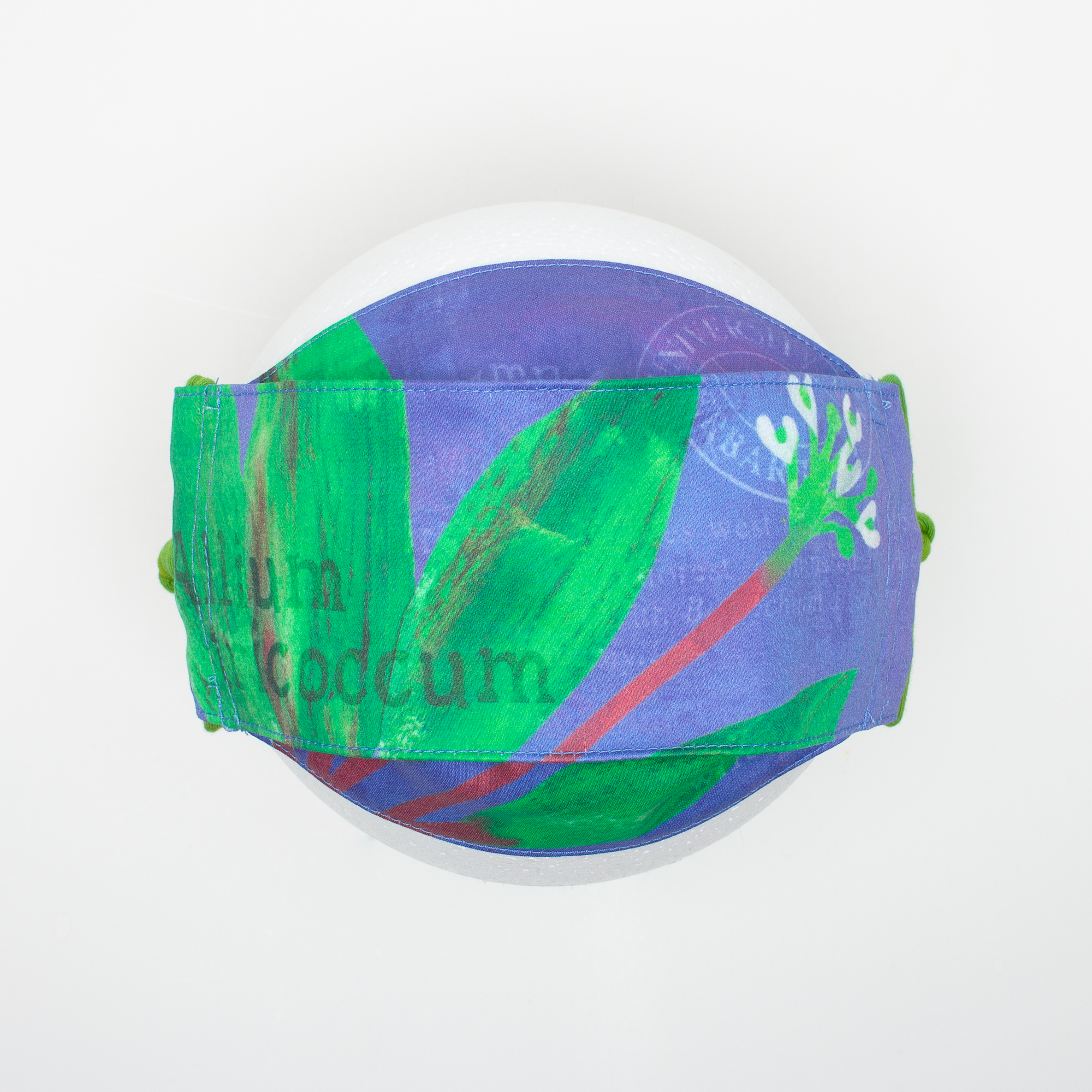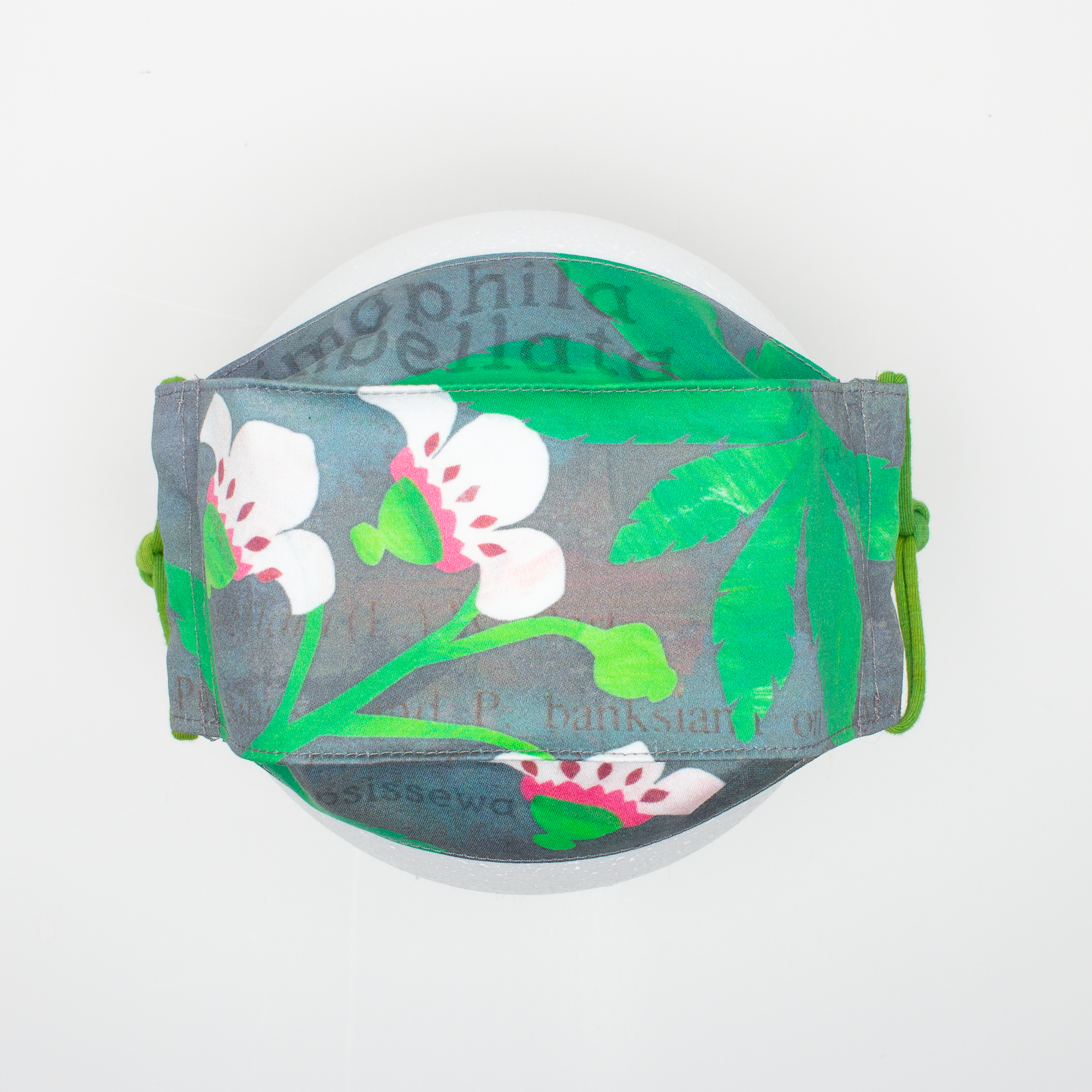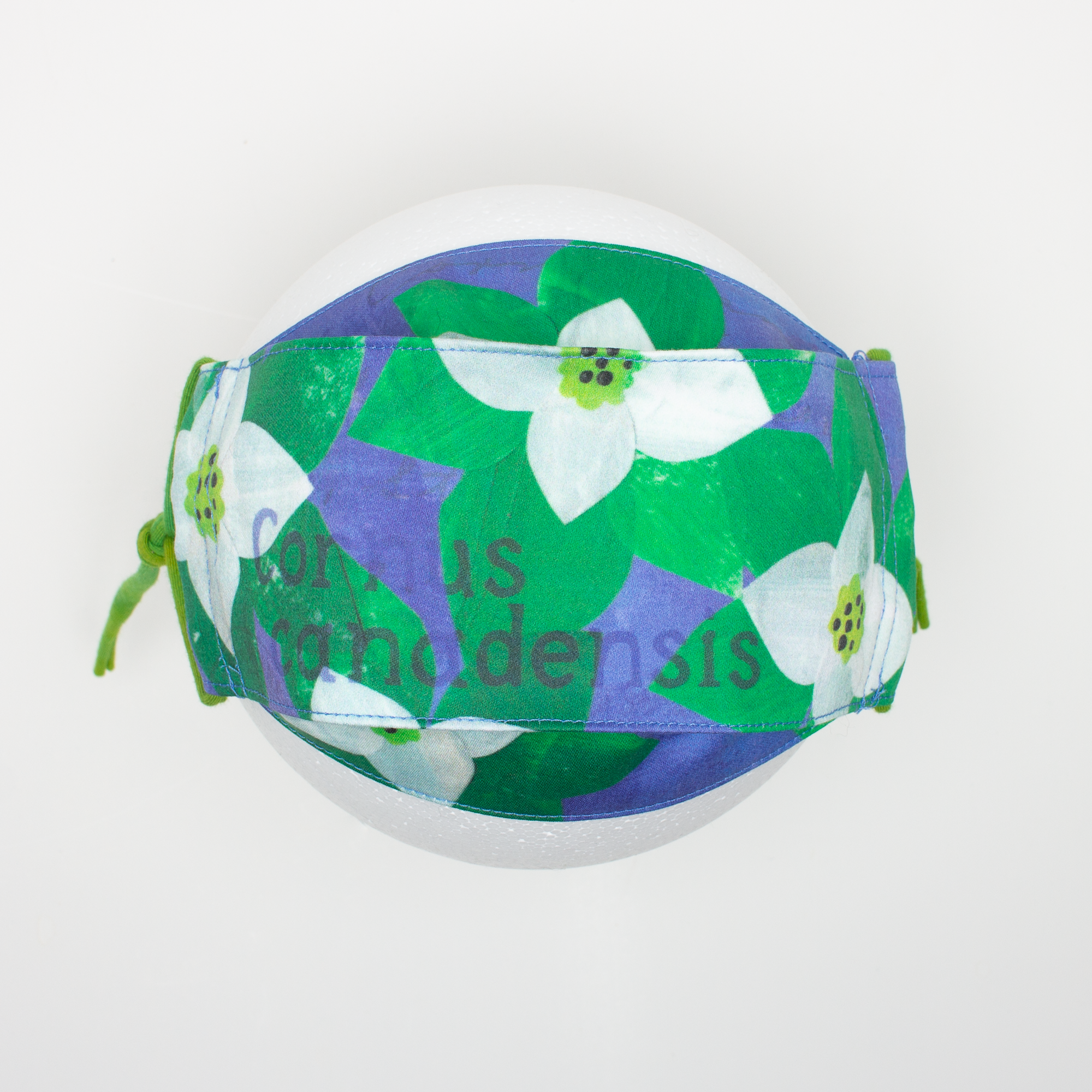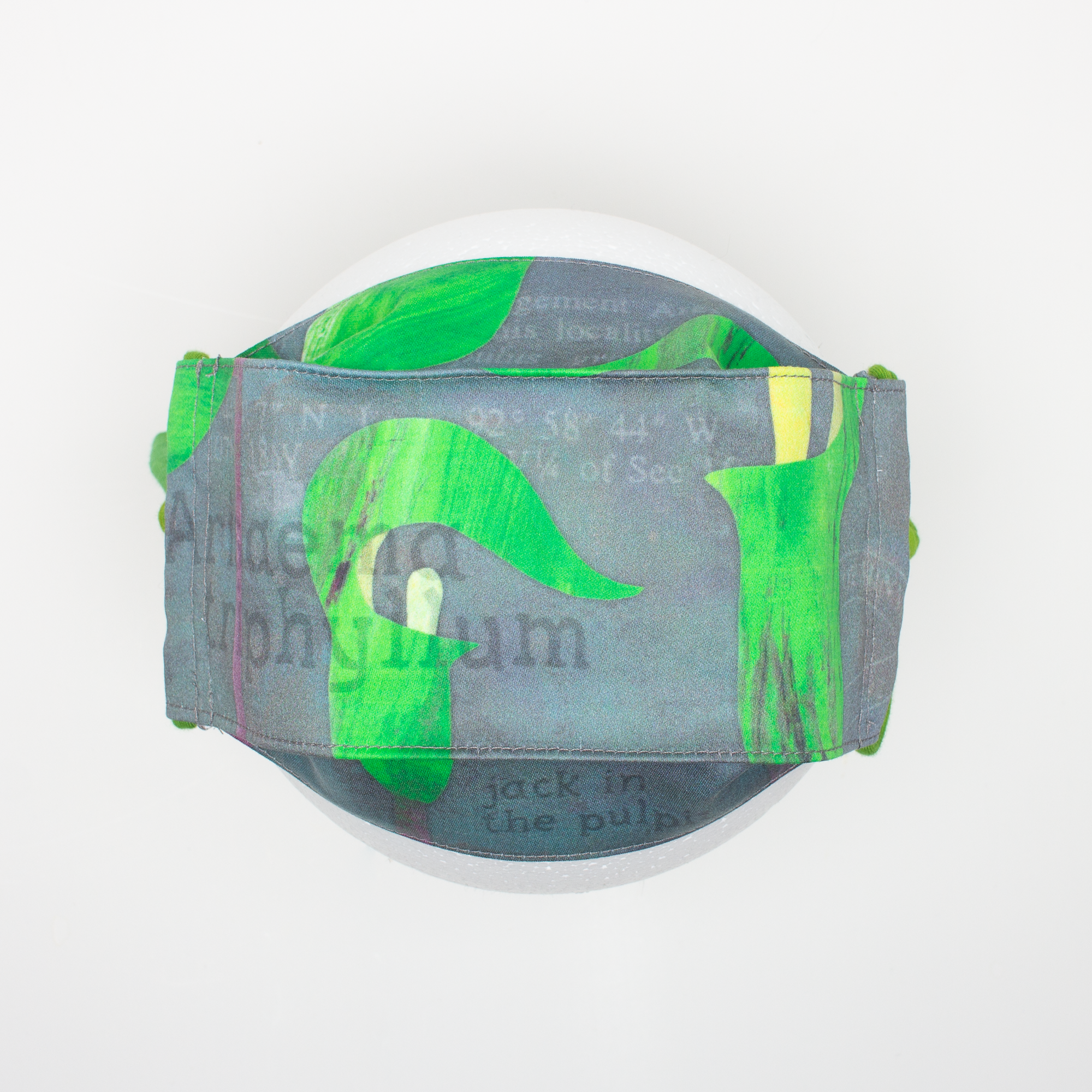Flora & Pharma: Medicinal Plants and Pandemic Attire
Images will take a moment to load. Click any image to see a larger version of the photo or scroll down for a slide show of images.
About this collection
I’ve been a stitcher since I was a kid. I learned to sew by making outfits for a tiny stuffed bear named Cinnamon. I worked as a theater costumer in my teens and 20s and I was the only person in my college dorm with a sewing machine. Sewing is not the kind of skill you win trophies for; the uncoolness of having something “homemade” was a reason to kind of keep quiet about it. In fact, years later as a full time artist who uses my sewing skills in nearly every piece that I make, those same skills are rarely the aspect of my work that I talk about. Exhibition labels and artist statements about my work often describe the surface design and the beautiful materials, but the process that transformed a flat piece of fabric to something 3-D and functional is almost an afterthought.
As with many things in 2020, that afterthought was turned sort of upside down with the need for face masks. Suddenly my sewing skills were in huge demand. Today, you can buy masks at every checkout counter and from every online retailer, but just a little less than a year ago they were nowhere to be found. I started to realize how many people I knew who didn’t know how to sew and didn’t know someone to make a mask for them. I made hundreds to donate to organizations and give to friends. Supplies were very hard to get, so I worked my way through years worth of leftovers and art samples: odd thread colors from making Halloween costumes, leftovers from baby gifts, and samples and scrap fabrics from exhibition pieces.
It was inspiring to see the creativity that came from the need for masks. Every week I would find a new design or pattern that another stitcher had created to make them fit better or be more functional. The creativity wasn’t about making them pretty, but it was the careful engineering of transforming something soft and flexible into a very specific three-dimensional shape. I read articles about the filtering properties of different fabrics and looked at microscopic photos of the fiber structures that influenced the effectiveness of the filters. Scientists studied the electrostatic properties of silk vs cotton and woven vs non-woven fabrics and how that changed the way they filtered particles. Making masks became a real fusion of art and science; the handcraft of sewing combined with the physics of fibers.
In 2020, I was chosen to be a resident artist with the Bell Museum to create some art inspired by something from their collections. Like many things, being a “resident artist” had a new definition in 2020. As everything has needed to evolve into a more virtual experience, I was struggling trying to find a way to really connect my art to the collections at the Bell Museum when no one could visit them in person. Thinking about the art and science of mask making made me wonder about other fields of science that could be involved in studying aspects of the pandemic; not just the epidemiologists and materials engineers, but also the scientists studying plants. Not only have they been studying plant fibers like cotton used for making masks but there are also scientists who study the medicinal qualities of plants for treating illnesses. A lot of those plants grow in Minnesota and are represented in the Herbarium Collection at the Bell Museum.
This collection of art represents my artistic research of those medicinal plants. Studying the Bell Museum’s digital herbarium collections and MN plant field guides, I chose 25 native MN species and created a cut paper illustration of each plant to be featured on a cotton mask. The original illustrations are made with paper, also made from plant fibers, and then digitally printed on to organic cotton fabric using eco-friendly inks. I sewed each mask, using a pattern I adapted from some of the designs shared with the sewing community throughout 2020. In keeping with the need for a virtual experience, I photographed the collection in my studio to create a virtual exhibition that you can explore from anywhere. I also created a collection of videos, activities and other ways that you can interact with and learn more about the art. We are hoping to show the masks as part of an in-person exhibition in 2021 and after the exhibition, the masks will be donated to local art and science teachers to inspire their students to look at the intersections of art and science in different ways.
This collection was created as part of my work for in the Resident Artist Research Project at the Bell Museum. You can see the exhibition of selected pieces paired with Herbarium Collection specimen sheets both online and in-person at the Bell Museum in the education wing. The Bell Museum’s Resident Artist Research Project is made possible in part thanks to generous support provided by the McKnight Foundation.
On exhibit
Select pieces from Flora & Pharma were on display at the Bell Museum in March – May 2021.
The Flora & Pharma collection was exhibited in September-October 2021 at North Suburban Center for the Arts as part of the “Connected: Art & The Environment” exhibition. Flora & Pharma was awarded a juror’s Honorable Mention Award for this exhibition.
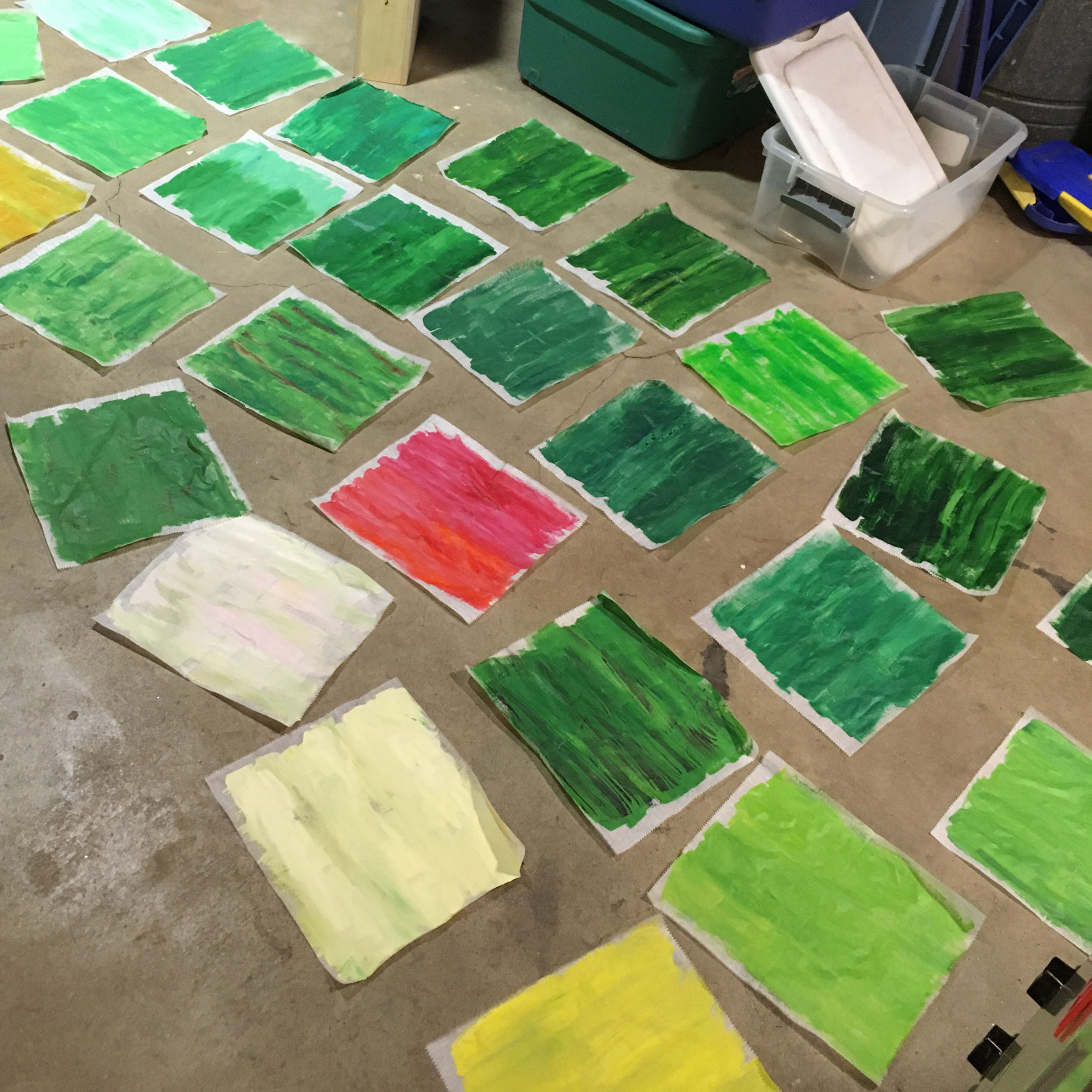
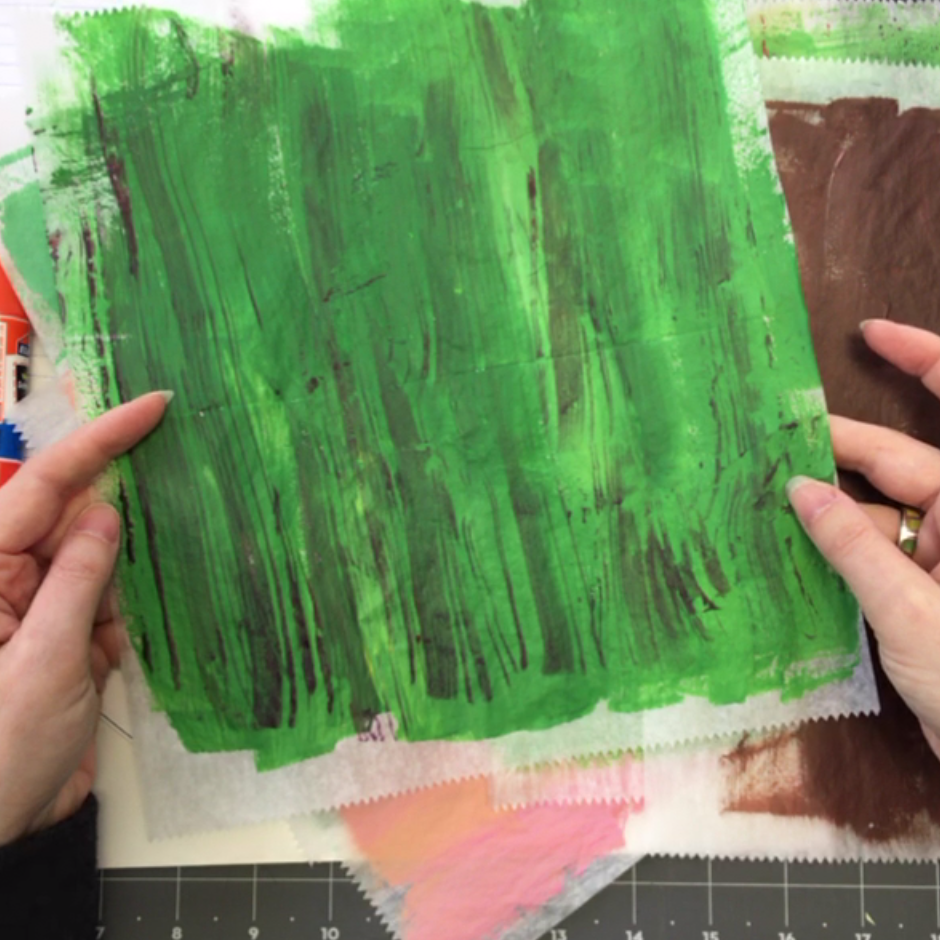
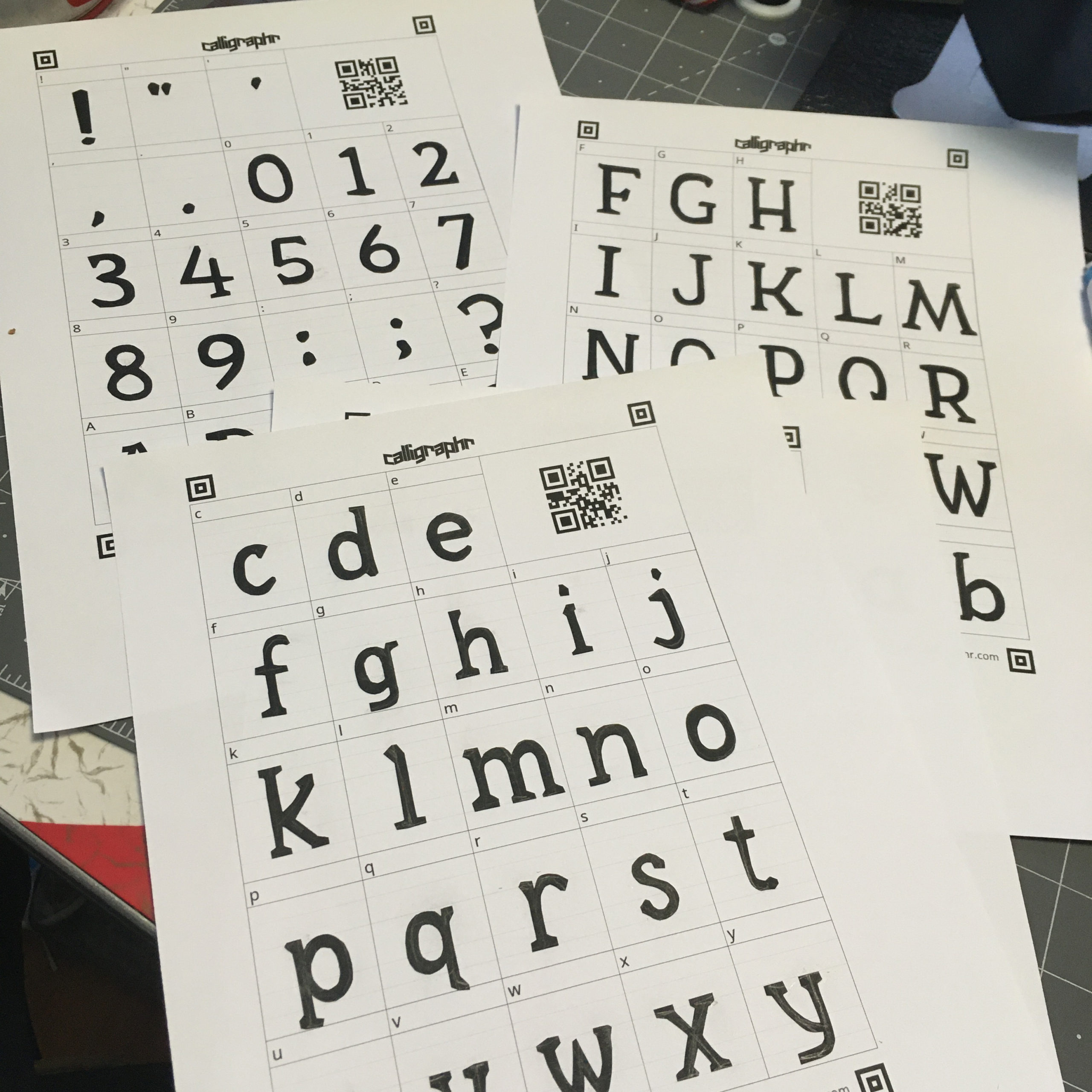
Thanks to Minnesota Wildflowers for invaluable reference descriptions and photographs.
References also include the Minnesota Biodiversity Atlas, the University of Minnesota Herbarium at the Bell Museum, and the Peterson Field Guide to Medicinal Plants and Herbs of Eastern and Central North America.
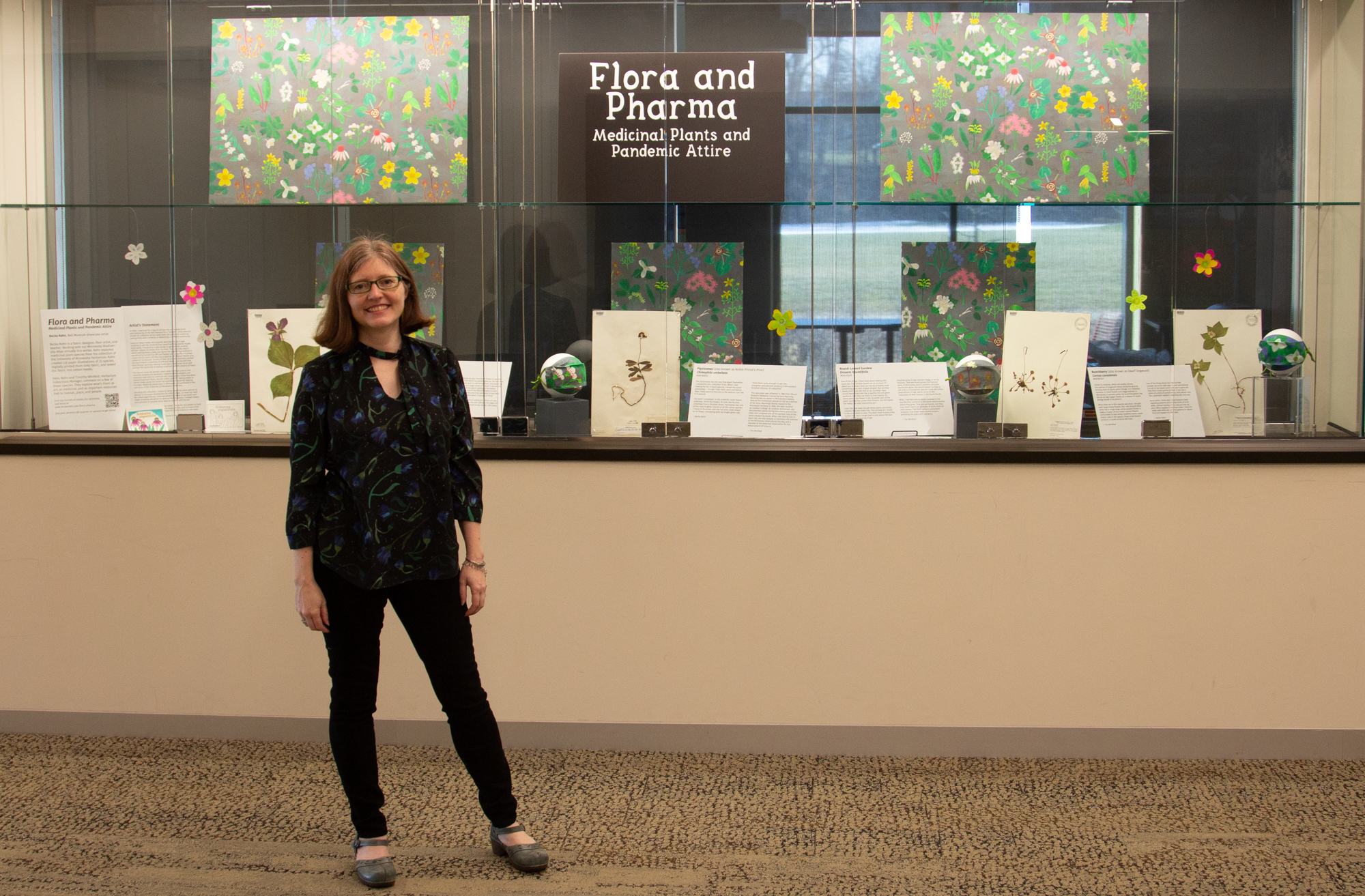
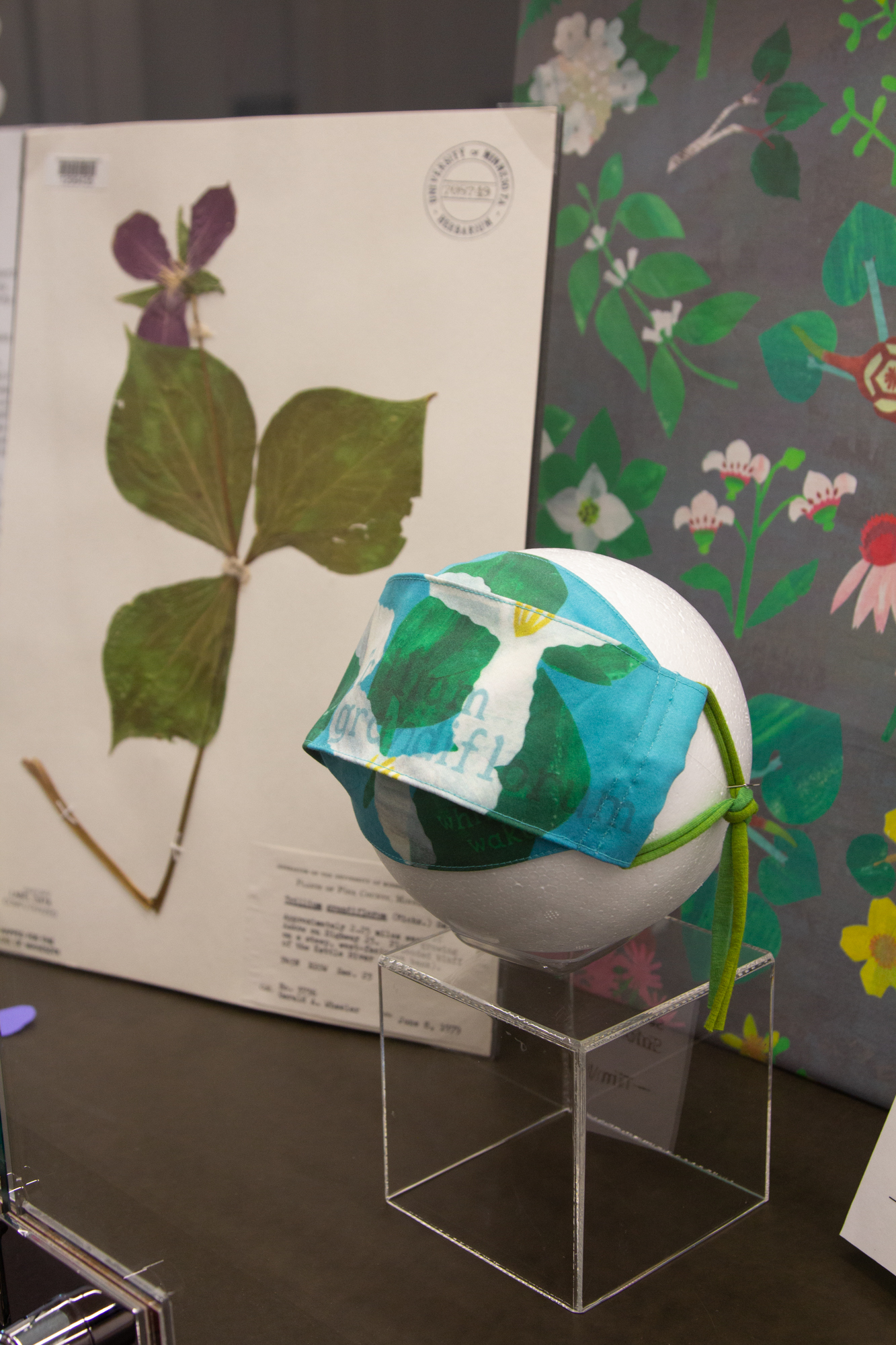
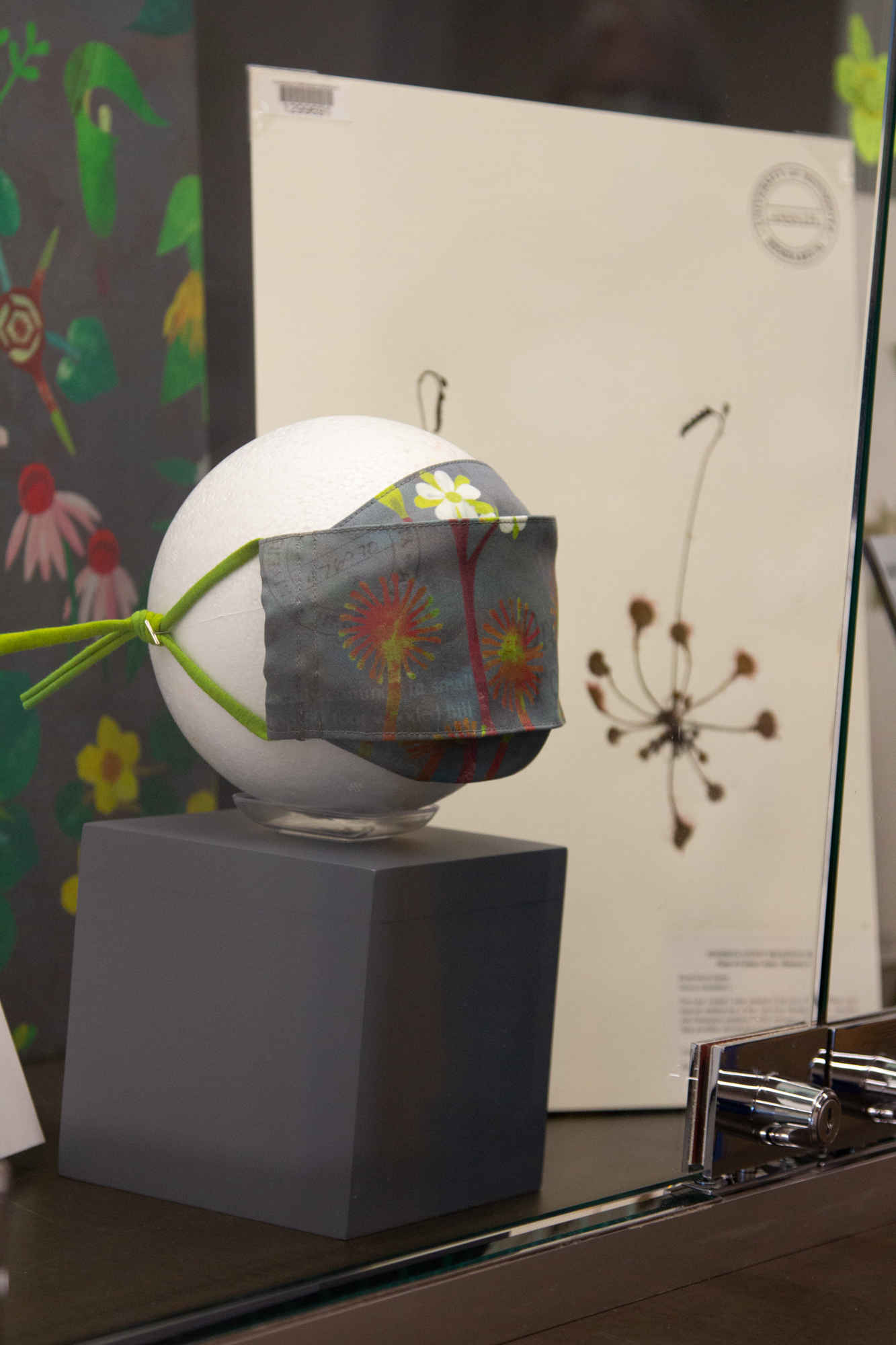
Learn more about the art
Materials
Masks are made from 100% organic cotton sateen, digitally printed with eco-friendly, water based inks.
Each is lined with organic cotton sateen, labeled with the artist’s name and numbered on the back.
Mask ties are hand-dyed cotton/spandex jersey.
Techniques
Each native plant illustration was created using hand cut collage from hand-painted deli paper. The illustrations were scanned and engineered into digital files suitable for printing on fabric.
Make your own art
Make Origami Bunchberry Leaves
Learn to fold your own Cornus canadensis or bunchberry leaves from rectangles of paper in this video origami tutorial. You just need a few rectangles of green paper, like wrapping paper, tissue paper, or origami paper.

Make a mobile
Turn your origami leaves into a mobile you can hang on the wall. Just fold some pairs of leaves following the video tutorial above. Then find a great stick from your backyard tree or the local park. Attach some pieces of thread to the back of your leaves with small pieces of tape or dots of glue. Tie the other end of the threads along the stick so the leaves dangle from the bottom. Add a ribbon or thread to the top to put it up on your wall or in a window.
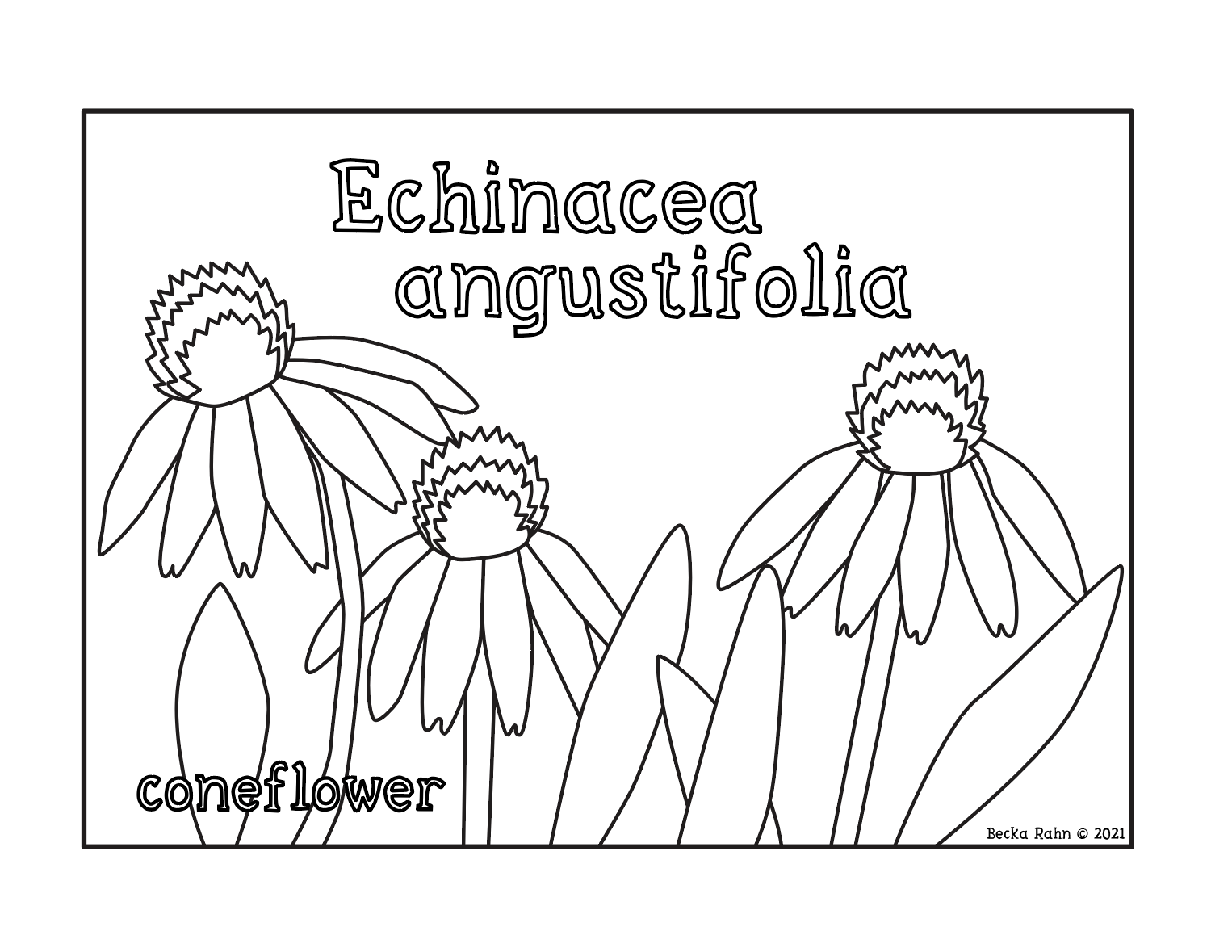
Coloring Pages
Download, print and color your own Echinacea angustifolia design. Choose either a full-page illustration or a half page notecard so you can send a note to someone to say hello. Each design fits on regular letter size paper. Just download the .pdf and print on heavy weight paper from your own printer.
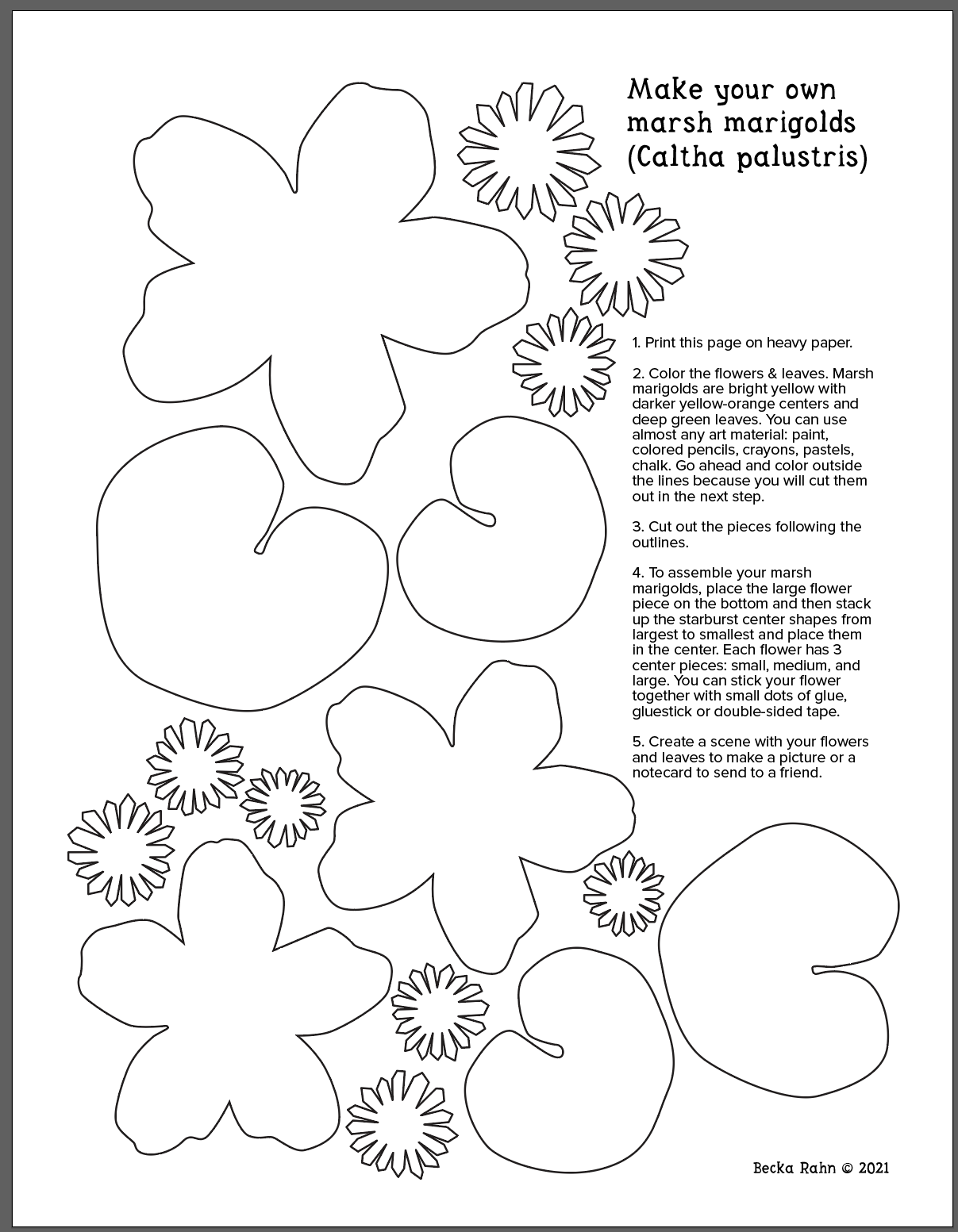
Cut Paper Coloring Pattern
Download, paint and make your own cut paper Caltha palustris (marsh marigolds) just like some of my art. Just print this page on heavyweight letter sized paper on your printer, add color with paints, colored pencils or pastels and then cut out and assemble your own cut paper scene. (1 page letter sized paper, pdf file)
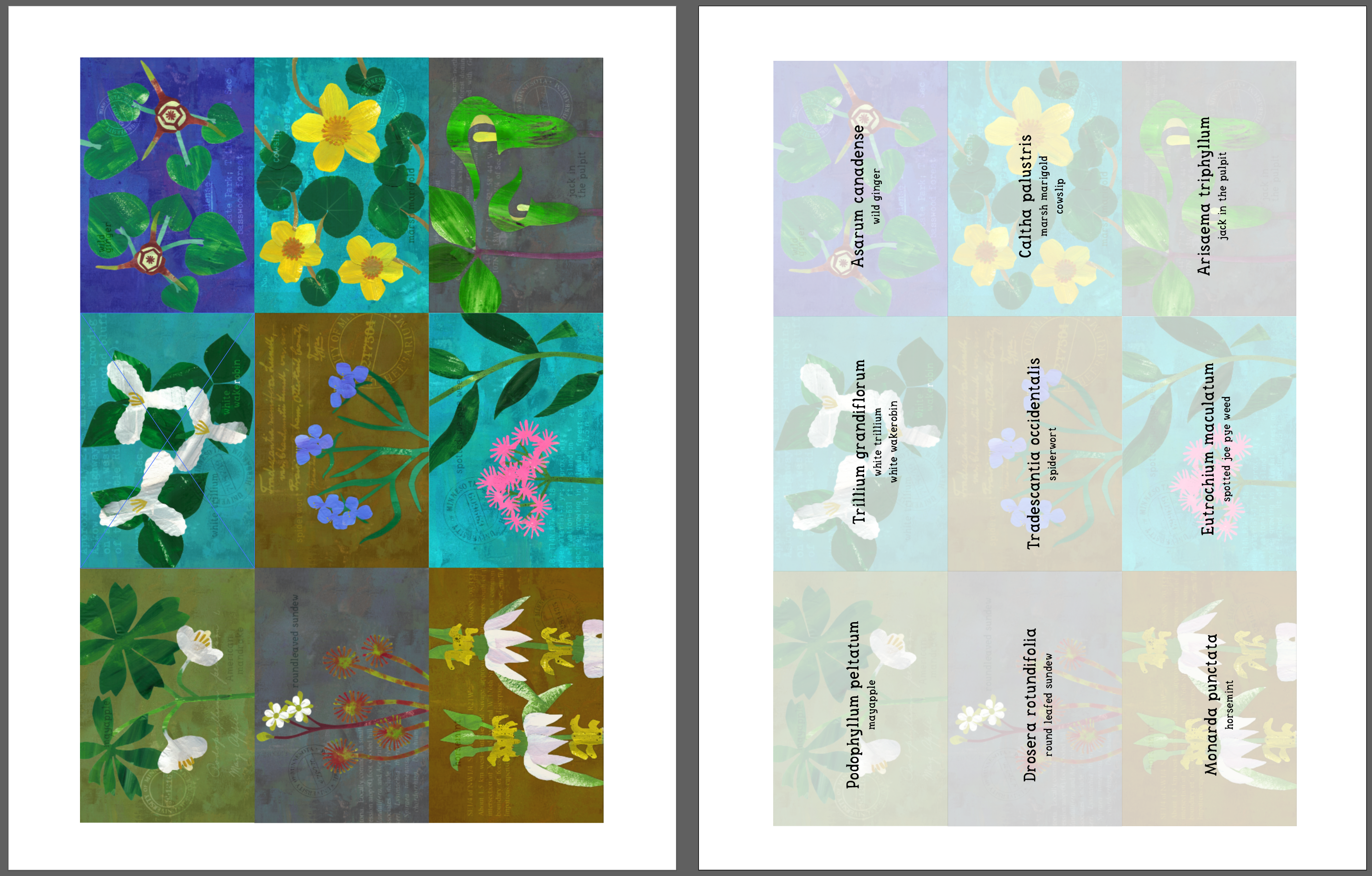
Memory Game
Can you match the flora to its scientific name? Just print and cut apart these sets of cards. Shuffle them all together and lay them out face down. Take turns flipping over a pair of cards to see if you can make a match. Can you remember where you saw the other Monarda punctata? Click below to download the .pdf file and print it on your own printer. (2 pages, regular letter sized paper)
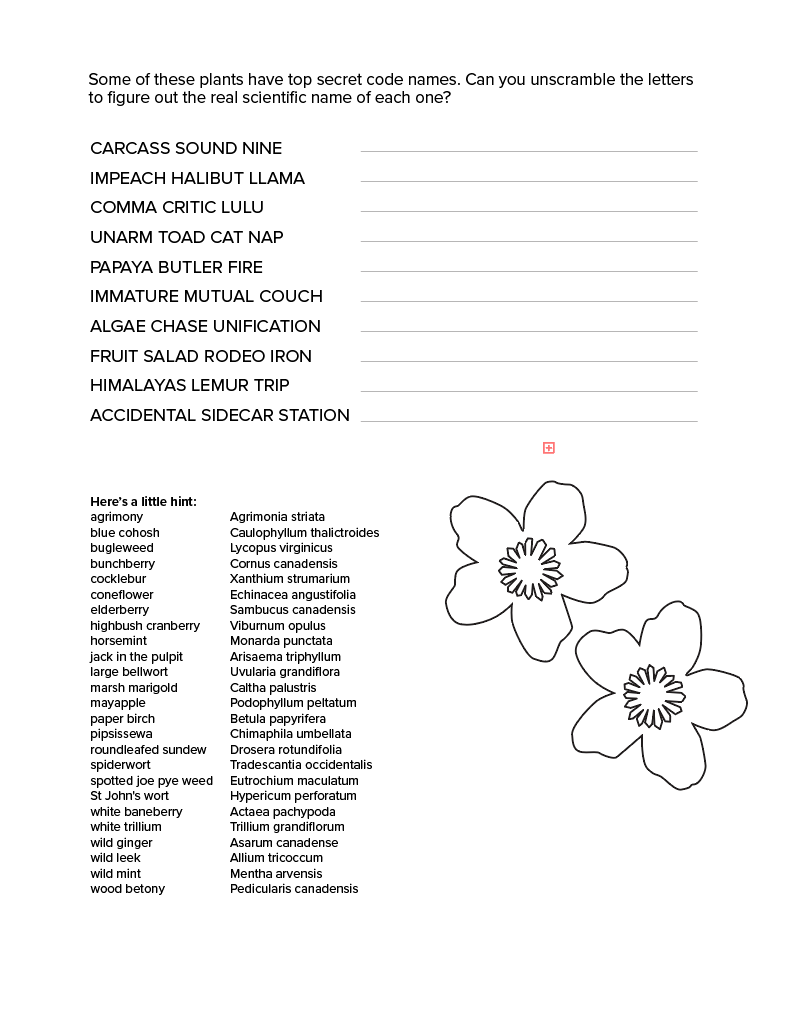
Unscramble the Secret Code Names
Some of these plants have top secret code names in the forms of anagrams. Can you unscramble their scientific names to figure out which ones? Download and print this sheet to start your code breaking. (1 page, .pdf file)
